Panmunjom Tour (Without pick-up service)
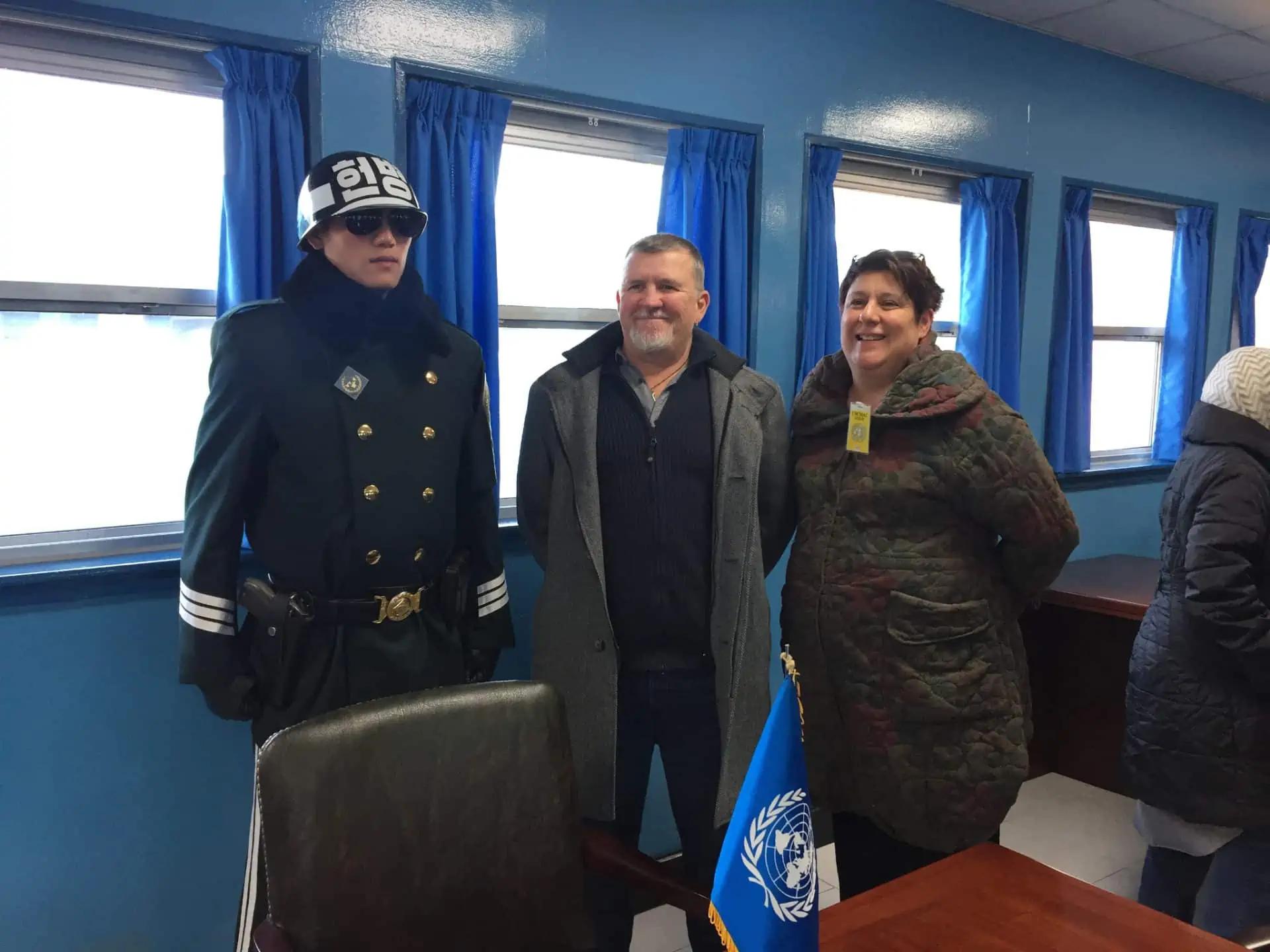
The ultimate Korea must-see for international travellers is a visit to Panmunjom. This area is rich in history, both factual and emotional. There are a few key sites to explore and things to see inside. Don’t miss this opportunity of a lifetime! Discover the most quintessential piece of Korean history on our Panmunjom Tour!
* Panmunjom tour bookings must be made at least 72 hours before your tour date. * Children under 12 years old are not permitted.
- Description
- Reviews (1)

What is Panmunjom? – Where the North meets the South
The original village where the Korean Armistice Agreement was signed is called Panmunjom. Today, this village is located a little north of the demarcation line (inside North Korea). However, these days, discussions between North and South Korea have moved to what is known as the Joint Security Area (JSA).
The JSA and Panmunjom are only 800m apart. Technically, the actual area where Panmunjom tours take place is the JSA, but nowadays, both terms (Panmunjom and JSA) are used interchangeably to refer to the JSA.
Panmunjom is the place often seen on the news, where the North Korean and South Korean border guards stand facing one another. The area is located 53 kilometres from Seoul and just 10 from North Korea’s Kaesong city.
Highlights and Logistics of our tour
There is a minimum age restriction of 12 years for children wishing to visit Panmunjom, and a parent or guardian must accompany them. Everyone needs to book at least 72 hours in advance to comply with the UNC restrictions and allow for a seamless experience.
There is also a restriction on the number of people who can visit Panmunjom each day. Unfortunately, this often results in tours becoming unavailable once that number is reached.
Alternatively, if you wish to see the history and key points of the DMZ without worrying about advanced booking and limitations, we welcome you to have a look at our Half day DMZ tour , which is, in fact, our number one DMZ tour by popularity and offers more convenience and flexibility.
Our Panmunjom tour includes lunch, transportation (excluding hotel pickup), entrance fees, and a visit to the infamous border between North and South Korea.
What you will see on our Panmunjom Tour
One of the best ways to experience the historical significance of the Korean conflict is by visiting Panmunjom. However, as this is a UN military-controlled area operated by the United Nations Command (UNC), the only way to visit Panmunjom is on an official tour with a fully licensed tour guide.
During the tour, you will see the following essential sites.
Imjingak Park – explore the emotional dimension of the Korean War
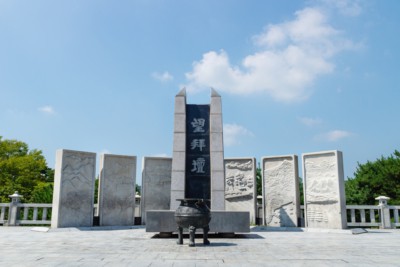
Imjingak Park is a special place. It was created as a safe zone to console the refugees who fled the North, seeking freedom. Here, you can see the train called “The iron horse wants to run”. It was made to symbolise the railroad that connected North and South Korea, which was dismantled during the war.
Next, on our Panmunjom Tour, you can see Mangbaedan. This is an alter where refugees bow to their ancestors lost in the North. You can walk the Freedom Bridge, which was built to free 12,773 prisoners in 1953. Finally, take a gander at the Unification Pond, which is the shape of the Korean Peninsula. Use this opportunity to take beautiful photos here!
The Unification Bridge (Tongildaegyo) – wishing for unity
Built in 1998, this bridge was a physical representation of the wish for the unification of North and South Korea. The bridge was constructed by the Hyundai Business Group of South Korea and stretches over the Imjingang River.
The bridge also serves as a passport checkpoint. While we pass through security, stop and have a look at this iconic construction.
Camp Bonifas – a commemoration of courage
Camp Bonifas is where the UN-controlled Command Forces stay and have jurisdiction. The area was named after the late Captain Arthur Bonifas, who was killed in an act known as “the axe murder incident” on April 18, 1976.
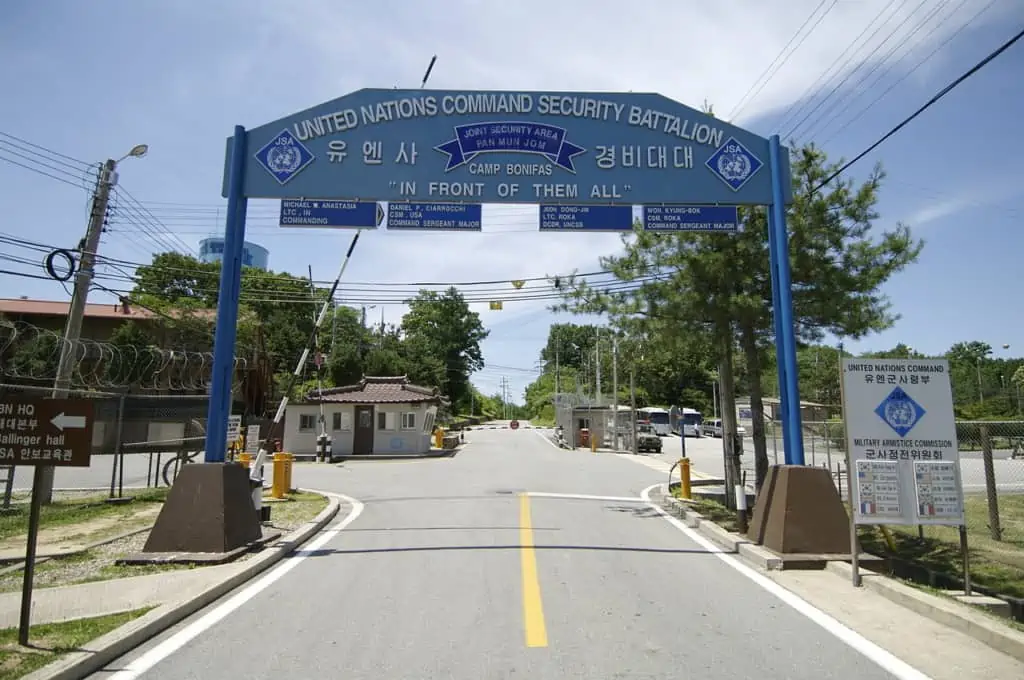
The UN guard forces came to Panmunjom in 1952 in order to protect and promote peace. By the time the Korean War was over, there were 1900 soldiers on the ground. Today, there are about 400. Witness the splendour of the military! Here, you will see a slideshow and have a briefing explaining the area’s deep history.
Freedom House – a space for peaceful negotiations
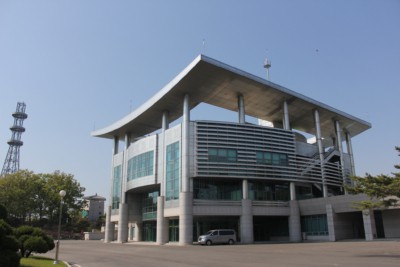
Another essential landmark we will see on our Panmunjom Tour is Freedom House. It was built as a safe space for negotiations between the North and the South. Construction took place back in 1965. Red Cross volunteers helped out, serving as a liaison between the two countries.
Today, the house still sits on the border, although it has been renovated since it was first built. You will see a sleek and modern design with four stories and a transparent roof, so take your camera out and snap some photos!
UNCMAC Conference Room – the room where crucial decisions are made
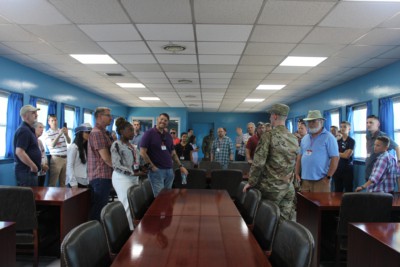
UNCMAC stands for the United Nations Command Military Armistice Commission, which was established at the end of the Korean War in 1953.
Its goal is to ensure that the Korean Armistice Agreement is being honoured. The United States president who spearheaded this commission was Dwight Eisenhower, who advocated for peace between North and South Korea.
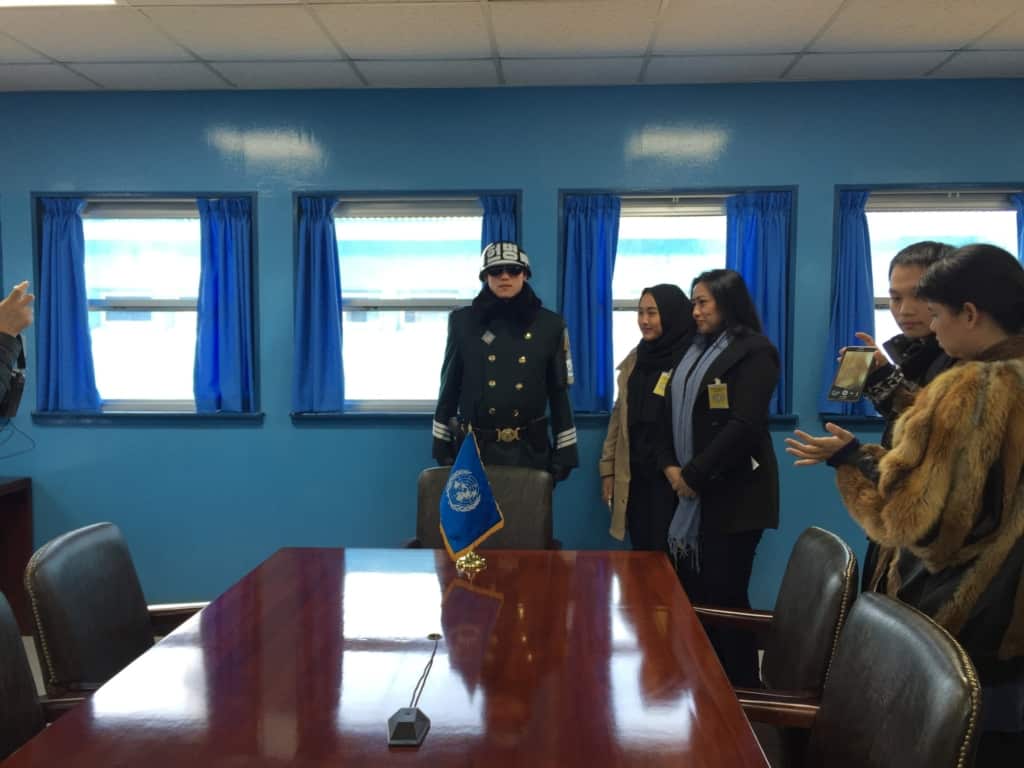
Here you will have the chance to enter one of the UNCMAC conference rooms briefly!
Peace House – the centre of non-military negotiations
The Peace House is where all political talks that don’t have to do with military issues occur. It is located 130 meters from Freedom House.
The building was temporarily erected in 1980 specifically for the meeting of the North and South Korean Prime Minister. It was later rebuilt in 1989. Its design is modern and clean, with a circular park neatly lined by trees.
Tongilgak – a space for discussion
Located in the northern part of Panmunjom, Tongilgak (Unification Pavilion) was meant to be a conference hall back in 1985. Then, in 1992, it began to function as a “liaison” between North and South Korea and has been used as the place for critical political talks. The meetings held here are only those that have to do with non-military matters.
Panmungak – North Korea’s home in the JSA
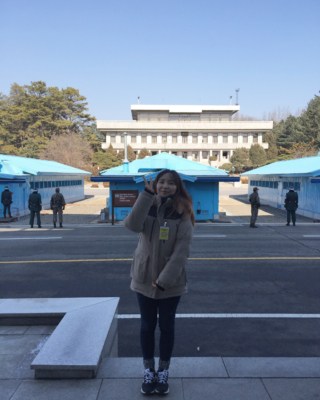
Next, on our Panmunjom Tour, we will see Panmungak (Phanmum Pavilion), the building that represents North Korea in the Joint Security Area.
Located 80 kilometres from Freedom House, this building was completed on September 2, 1969, and is where the offices of North Korean officials are located. Representatives from the North come here to prepare for armistice talks with the South.
The building has also been used to devise propaganda against the South every year on the 15th of August. One such example is the “8.15 Pan-Korean Convention”.
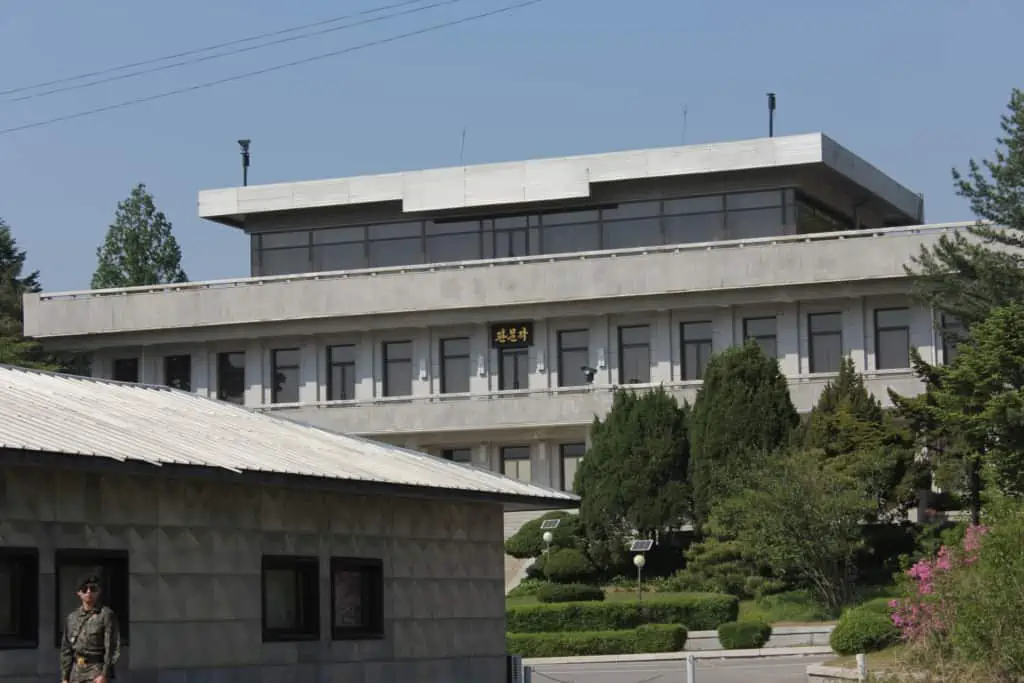
Initially, this building was not opened to the North Korean public, but this changed in 1964. So don’t miss the opportunity to see North Korea’s representative building!
The Bridge of No Return – a crossroads between the North and South
The Bridge of No Return crosses the Military Demarcation Line (MDL) and was used as the only entrance to the JSA from Kaesong city in North Korea.
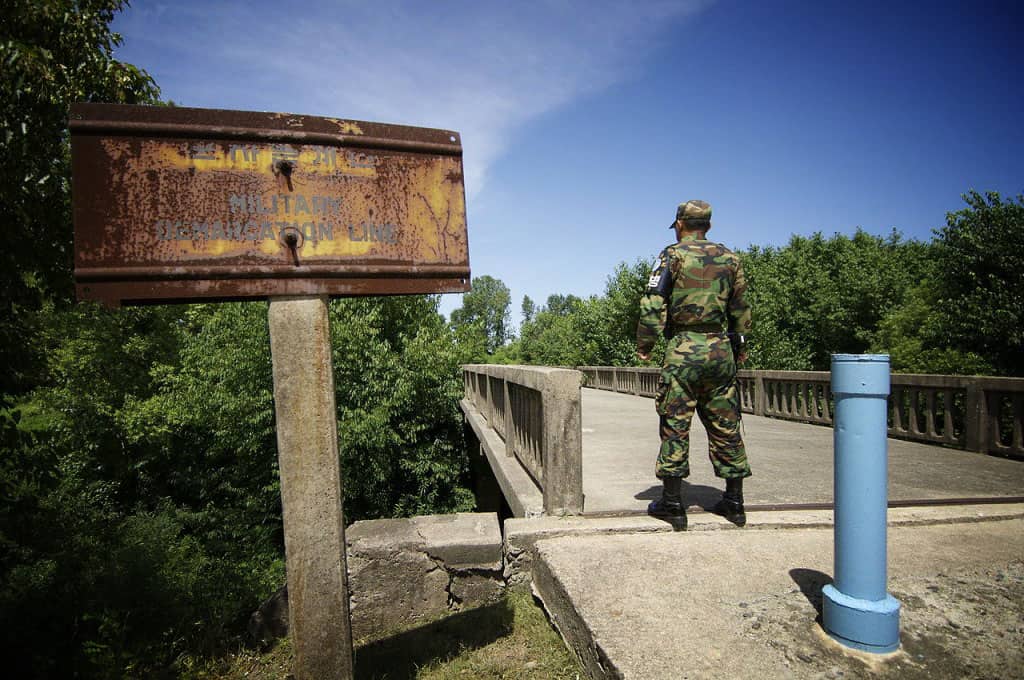
In 1953, a POW (Prisoner Of War) exchange was made right here, and the soldiers were given a choice of whether they wanted to go to North or South Korea. This is where the bridge’s name came from; once a soldier made his choice, there was no turning back!
Later, in 1976, the famous “axe murder incident” happened next to this bridge, resulting in its immediate closure. Today, the bridge is surrounded by trees and vegetation, making it much less intense. However, there is a lot of bad sentiment surrounding this bridge.
72 Hours Bridge – the North faces a tight deadline
After the “axe murder incident” happened, the Bridge of No Return could no longer be used. North Korea needed another way into the area, as that was its only entrance. The country spared no time and built another bridge. As its name suggests, the new bridge was built in just 72 hours.
You may actually have seen this bridge before without realising it. The 72 Hours Bridge is the same bridge a North Korean defector drove a military Jeep across in November 2017! The footage was shown across all major news outlets.
In his bid to escape the North, he got fired upon by North Korean border security, taking 2 bullets while crossing the demarcation line. He was then rescued by South Korean border guards and airlifted to hospital to receive emergency treatment.
Our Panmunjom Tour will give you a fantastic opportunity to learn about the Korean War and conflict resolution. Don’t miss the chance to visit Panmunjom and get a genuine glimpse into the past! However, for the ultimate experience, we would recommend our DMZ JSA Tour , which combines the most important highlights of both the Demilitarized Zone and Panmunjom. Create travel memories you will never forget!
Panmunjom tour Itinerary
- Meet at President Hotel (Seoul)
- Imjingak Park
- Unification Bridge (Passport Check Point)
- Camp Bonifas (Slide Show and Briefing)
- Panmunjom (Freedom House, Conference Room etc)
- Drop Off at President Hotel (Seoul)
Our Panmunjom tour includes
- Professional and licensed tour guide
- Transportation to and from Panmunjom
- Entrance fees and tickets
- NO shopping stops
Additional Notes
- There is no complimentary hotel pickup service available for this tour.
- Please bring your passport on the day for UNC security checkpoints.
- The above itinerary, time and price can be changed depending on the current situation.
- Panmunjom tour bookings have to be made at least 72 hours before visiting. .
- Koreans cannot book this tour.
- There is a strict dress code: Standard blue jeans are OK, but no sleeveless shirts, t-shirts without collar, short pants, skirts, sandals, military-looking clothes, or clothing with country flag or name of the nationality.
- Children must be at least 12 years old and accompanied by a parent or guardian to join this tour.
- The JSA is controlled by the United Nations Command (UNC). There are limited seats due to restrictions.
1 review for Panmunjom Tour (Without pick-up service)
Antonio – September 9, 2019
During booking process staff replied quickly and comfortably. Took copy of my passport so could register me to enter panmunjom. They gave me clear details and instructions about everything. We had to meet at the Hotel Predsident in the morning as there is no pickup available with this tour. Bus was comfortable and tour guide gave lots of information. Only regret is not booking VIP Travel’s full DMZ and JSA tour as this one only goes to joint security area and not the Observatory or 3rd tunnel.
Holly – November 5, 2019
Dear, Antonio Above all thank you for the review of DMZ and JSA tour .
As we have the Live chat on our website , it is easy for us to response quickly 🙂 From 2019 , the JSA tour doesn’t include the pick up service , really sorry for the inconvenience as the tour is managed by UN community the tour conditions are depends on them :'( Please join the DMZ half day tour with VIP if you ever comeback to Korea again : )
We always treat our customer as VIP Thank you Holly
Show only reviews in English (1)
Your review *
Name *
Email *
Save my name, email, and website in this browser for the next time I comment.
Customers who viewed this tour also viewed...
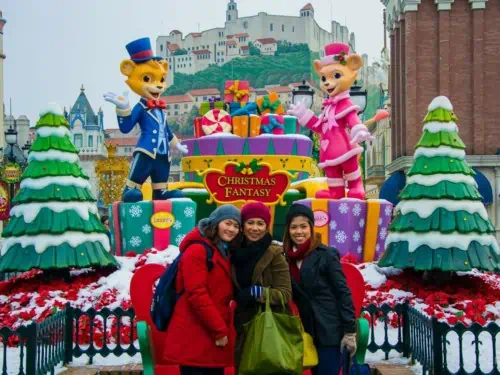
Everland tour (Theme Park Ticket & Transport)
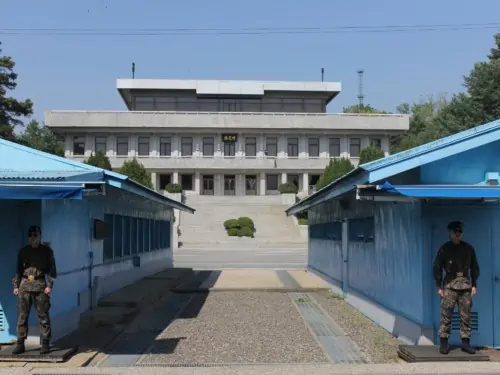
DMZ JSA tour
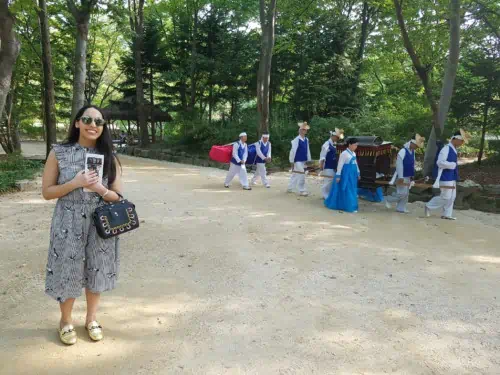
Korean Folk Village tour (Afternoon)
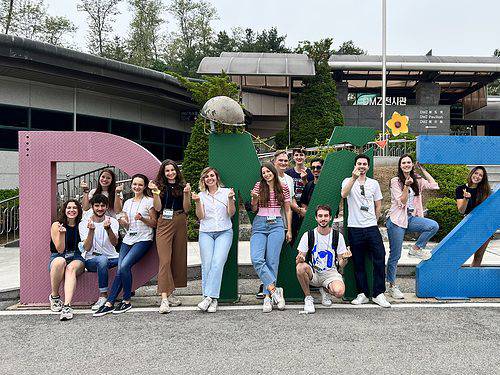
Best DMZ Tour From Seoul (No Forced Shopping)

Welcome Guest
What to expect, traveler's photos, activity provider, payment / cancellation policy, full day korea dmz and jsa (joint security area) tour from seoul.

Great tour!
Angelmylife, it was a nice look around., available tue, wed, thu, fri, sat, pick-up not available, travelers interested in this activity also viewed.
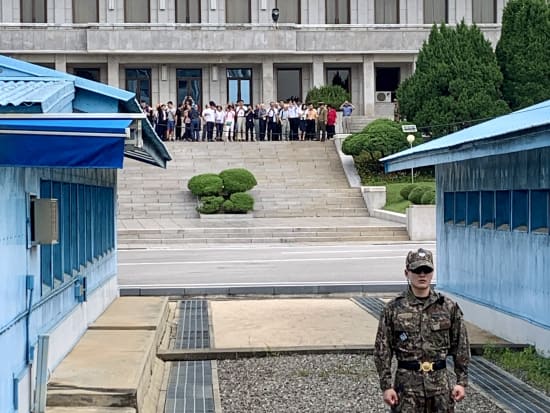
Overall rating
The tour guide was awesome, very knowledgeable and interesting. He loves his job. I had a great time. Some rude people kept talking over him...RUDE. The only complaint I have is that there were not any North Korean sol ... diers in the blue house. I would have liked to have seen one. We got exactly what was promised out of this tour. The bimbimbap was delish. We were warned that we may not get to go to visit the JSA, but we did get to. thank goodness. Loved it. It was an ALL day tour. Left in the morning and arrived home in the evening. Long ride home. :)
I've booked a DMZ and JSA tour but half a day before the tour should start, they cancelled the JSA part. It was okay. We saw various things like the tunnel to the boarder to North Korea, an observation platform where w ... e could see North Korea... but also a manufacturer for jewellery. I don't know why this should be a part of a tour concerning North Korea.
JSA and DMZ Canceled
After preparing fr months, making two expensive hotel bookings and stopping in Korea just for the tour then being canceled due to the African Swine Flu so very expensive and disappointing but not Veltra's fault. They han ... dled alternative tour and refund difference perfectly and Han our guide was wonderful. But sad I did not see what I traveled 8 thousands of miles to see.
Activity Provider Cosmojin Travel Agency
- Credit card payment

- Any cancellations made after the booking confirmation date will be subject to a charge of 100% of the total amount.
Payment Methods

Cancellation Policy
Please visit VELTRA Support page to send an inquiry about this activity.
Editor's Picks for Seoul

Korea DMZ and JSA Tours: From Division to Peace
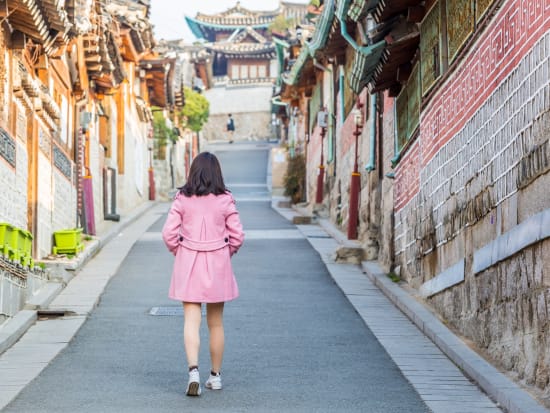
Last-Minute Activities and Essentials in Seoul
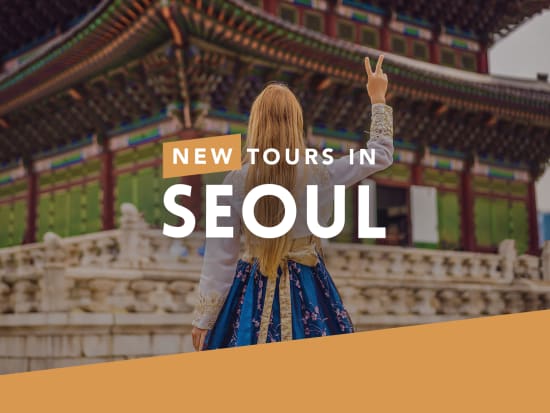
New on VELTRA! Seoul Tours and Things to Do
The Grandeur of Seoul's Royal Palaces
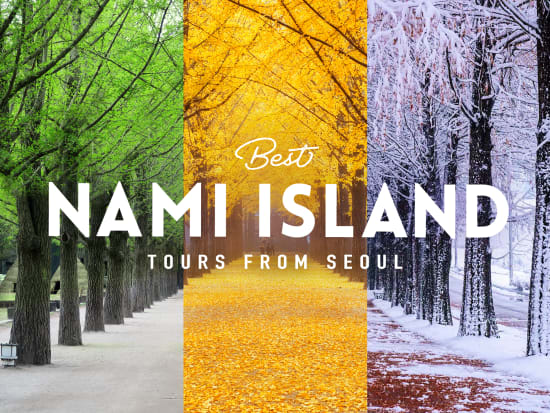
Best Tours of Nami Island from Seoul

Ride the Korean Wave

Top Shows You Should See in Seoul

Enthralling Amusement and Theme Parks near Seoul
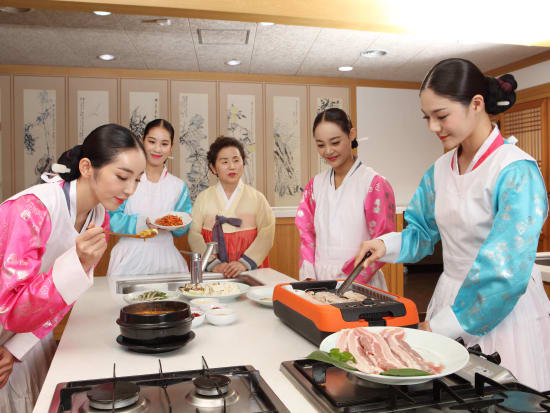
Traditional Cultural Experiences in Seoul
日本語ガイド&オムレツ昼食付き, eur 152.00~.
You can only add up to 10 items in the list.
Please reduce items in the list.
- Children 11 years old and above can participate in this activity.
- The JSA area is under strict military jurisdiction and is subject to sudden closures. Scheduled tours may be changed or cancelled without prior notice at any moment. Guests will be offered alternatives or refund for affected tours.
- Guests with serious fear of enclosed spaces (claustrophobia), heart and cardiovascular issues, asthma or other respiratory problems are not permitted to enter the Third Tunnel. Walking through the Third Tunnel is not required. Guests may opt out and choose to stay in the bus, exhibition room or souvenir store.
- Korean passport holders or citizens residing in Korea will not be able to join this tour due to local laws. Citizens who live outside Korea will need to send a "Certification of Residence Overseas" to participate in this tour.
- Walking shoes
- The JSA has a strict dress code. Please dress appropriately in smart casual attire. Avoid revealing clothes such as sleeveless tops, short pants and skirts, ripped jeans, tight garments like leggings and open-toed shoes. Please refrain from wearing military-style outfits, biker gear, sports wear with logos and over-sized clothes.
- Following UNC rules, citizens of the following countries will be requested to submit a scanned copy of their passport (first page with photo) after booking to [email protected]:
- Afghanistan, Algeria, Azerbaijan, Bahrain, Bangladesh, Belarus, Bolivia, Bosnia, Burma, China, Cuba, Egypt, Estonia, Georgia, Hong Kong, India, Indonesia, Iran, Iraq, Jordan, Kazakhstan, Kuwait, Kyrgyzstan, Latvia, Lebanon, Libya, Lithuania, Macau, Malaysia, Moldova, Morocco, Nigeria, North Korea, Oman, Pakistan, Palestinian Authority, Qatar, Russia,Saudi Arabia, Singapore, Somalia, Sudan, Syria, Taiwan, Tajikistan, Tunisia, Turkmenistan, Ukraine, UAE, Uzbekistan, Venezuela, Vietnam, Yemen
- Names, nationalities and passport numbers (and copies of passport if needed) must be sent at least 72 hours before the tour. Without this information, the activity provider cannot confirm your seat.
- Every visitor has to use the authorized bus and follow time and photo regulations. The operator cannot be held responsible for any personal incidents or losses during the tour.
- The activity schedule is subject to change or cancellation due to weather or traffic conditions.
- When in the MAC conference rooms, please refrain from touching any equipment, microphone and flags that belong to the North Korean side.
- Please do not approach or engage with any personnel of North Korea. Do not speak to them or make any gestures.
- The following items are prohibited within the JSA premises: cameras with lens larger than 90mm, wheelchairs, walking sticks, umbrellas, luggage and big bags.
- STEP 3 Book another activity, and use the coupon for a discount!
- Valid for one (1) booking per account during the designated promotional period.
- Cannot be used on the same activity on the same date and time as the first activity, or applied to activities that have already been booked.

- Company Information
- Investor Relations
- News Release
- Supplier Sign-in
- Add Your Activity
- Privacy Policy
- Basic Policy on Information Security
- Terms & Conditions


- Korean Language Summer Course in Pyongyang
- Dandong DPRK Border
- Shanghai Bike Tours
- TOUR EXTENSIONS
- How to Book a Tour
- Testimonials
- KTG 360°
- Humanitarian Work
- Where to Go
- Tours & Dates
- Hotels in North Korea
- Hotels in Pyongyang
- Travel Insurance
- Transportation
- Interactive Map
- DPRK Information
- Facts & Figures
- DPRK History
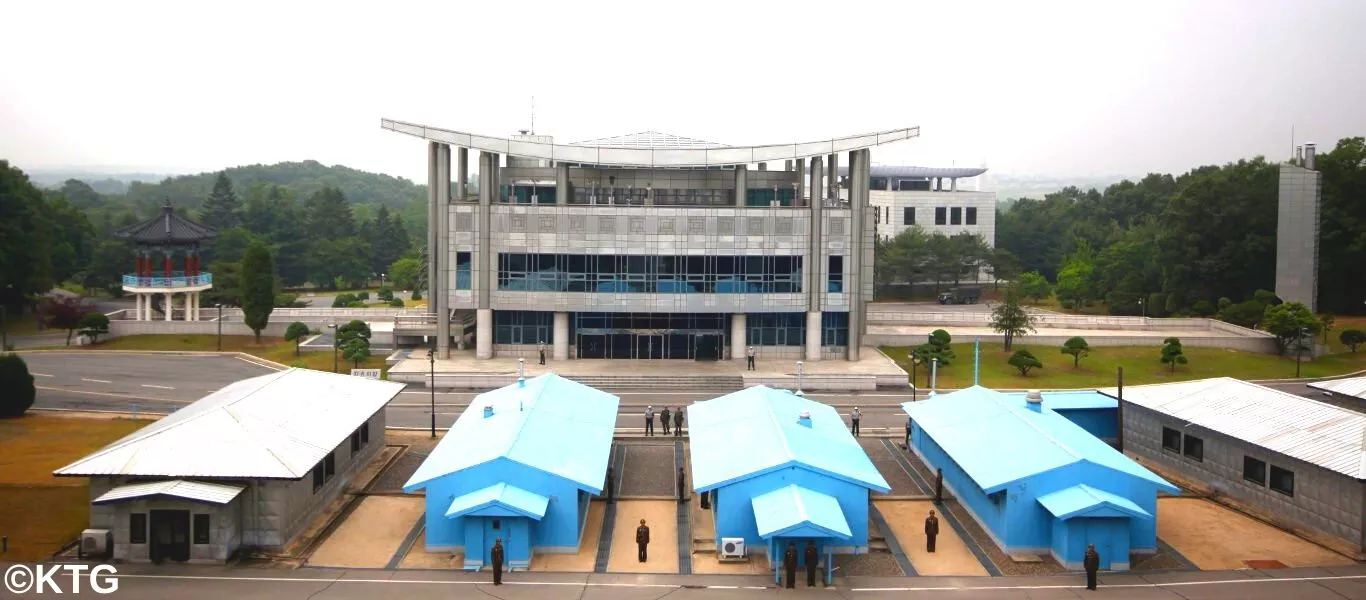
Panmunjom - the scariest place on Earth?

Introduction

Hall of Armistice Talks

Peace Museum

Autograph Monument

Demarcation Line
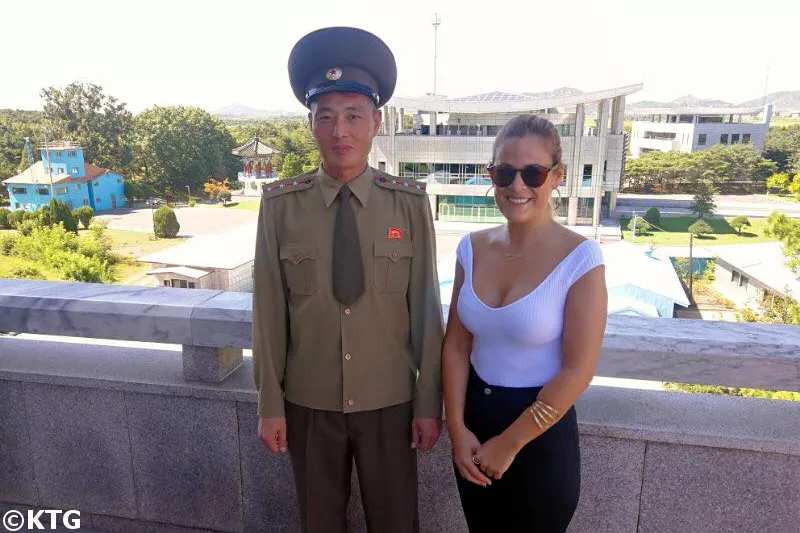
Panmun Pavilion

Panmunjom is where the Korean War Armistice was signed in 1953. North and South Korea are still technically at war as peace treaty was never signed.
It was agreed that a no-man's land 4 kilometres wide and 250 kilometres long stretching across the Korean Peninsula would be created. This is known as the Demilitarised Zone (DMZ). The most militarised de-militarised zone and borderline in the world, it was described by former US President Bill Clinton as the "scariest place on Earth".

The scariest place on Earth? KPA officer shakes hands with a traveller from KTG before we move on to the Hall of Armistice Talks.
Panmunjom (Panmunjeom) is the most visited place of the DMZ. Many tours run from Seoul to the Joint Security Area. If joining one of our tours you will have the chance to see the dividing line from "the other side" and hear the North Korean version of the Korean War .

We pass under the Reunification Monument in Pyongyang when taking the Reunification Highway to Kaesong.
Panmunjom is located 168 kilometres south of Pyongyang and just 8 km away from Kaesong city. The ride takes around 3 hours each way.

When heading there we have a break at a tea house that is built over the highway that connects Pyongyang to Kaesong; Tongil (meaning reunification in Korean) highway. We usually have a 10 minute break there. You have some coffee, tea, snacks and buy souvenirs too.

Tip: not many travellers do this, but if you go up the tea house you can get some great shots of the highway! Check our Youtube video below:
Arriving at Panmunjom
Once we arrive at the car park of Panmunjom we get off our bus/car. There is a building to our right and toilettes are on the left hand side.

The building to the right consists of a souvenir shop and a room where a soldier will give us a briefing about the Truce Village. After the soldier gives his briefing we exit the room and line up. Each group is then to walk straight, one by one, back on the bus where at least a soldier (sometimes more) will accompany us.

KPA officer briefing us on Panmunjom at the DMZ.
We then drive from there to the Peace Museum which is where negotiations took place during the war. As we head there you can see locals farming the lands and, almost out of nowhere two large flag poles, rising high in the sky, one with a giant DPRK flag and, the one on the South Korean side, with a South Korean flag.

When we get off the bus we will have to line up again and the soldier will guide us. We see where negotiations between the DPRK and US led forces took place. The original tables and chairs are still there.

Peace Museum (평화박물관)
Next is the museum where the armistice was signed. You can see the original UN flag used as well as pictures and weapons related to Panmunjom.

The Korean War Armistice room can be seen in the image above. It was built in only 5 days by the North Koreans who refused to sign the armistice agreement in a temporary tent as suggested by the US. This hall had 900 square metres and is where the armistice agreement was finally signed. The original UN flag, tables and chairs used are preserved in this hall.

Pictures and weapons can also be seen in the Peace Museum.

The Korean peninsula witnessed the first Cold War armed conflict , involving North and South Korean, US, UN and Chinese troops. The peace treaty between the North and South has not yet been signed, making this conflict longer than its origin.
Monument to President Kim Il Sung’s Autograph
We hop back on the bus and continue the tour. The first stop here is the Monument to the autograph of President Kim Il Sung. The soldier guide will explain that this autograph is a replica of President Kim Il Sung’s last signature where he expressed his wish of reunification of North and South Korea.

Military Demarcation Line

We keep walking towards the demarcation line and, all of the sudden, we are face to face with the blue negotiation rooms that sit on the line that separates both Koreas, the famous Freedom Building in South Korea in the background. Here we are, what many describe as a trip highlight; the Military Demarcation Line.
DMZ North and South Korean soldiers seen in the picture. Despite the signing of an armistice, there is no peace treaty. As a result the two sides are still technically at war.
The concrete slab shown below separates the Korean Peninsula and only a few meters separate the North and South Korean soldiers. Tension is sometimes almost tangible here. We have seen for instance DPRK soldiers walk close up to the concrete slab and take pictures of their South Korean counterparts who were showing US military personnel around.
Armed conflicts have sporadically taken place since 1953, though these have decreased in the past few years.

North and South Korean soldiers take turns in entering the Military Armistice Commission building that runs on the concrete slab that divides the peninsula into two places with completely different political ideologies.

Tension? Notice the North Korean soldiers on the right side of the image taking pictures of South Korean soldiers just a few meters away from them.
South Korean soldiers and tourists visiting from South Korea can be sometimes seen too.

Panmunjom - North Korean soldiers cover the southern door of the building that crosses the demarcation line. They are literally standing in South Korea.

KPA officer shakes hands with Rayco from KTG outside the Panmun Pavilion in Panmunjon
We are absolutely not allowed to cross this line (except for when inside the blue negotiation room when you can go to the other side of the table which is technically in South Korea). It is common for soldiers from the South to glare through the window when visitors from the North come in and vice versa. There are microphones in the room which also mark the dividing line. They record 24/7.

Panmunjom Military Demarcation Line - this microphone line divides the two Koreas; a line that has divided the peninsula and one same people for decades.
After staying here for a while you will be escorted out of the blue building and the North Korean soldiers will leave too locking the Northern door (where you come in and out the building) and South Korean soldiers will enter if they have a group. Then two of them will stand in front of the northern door. It has become less common in recent years to be able to see tourists coming in from South Korea when we go to the DMZ and we have been told that visits from the South are arranged at different times now. Please bear in mind that visitors are not allowed to step behind these soldiers.
Panmungak (Panmun Pavilion, 판문각)
We then head to Panmungak, the building facing the negotiation rooms, to have a clear view of the Military Demarcation Line. It's a great place for pictures! It was built in 1969. In South Korea they have the Freedom House which you will notice is full of CCTVs.

DMZ tours - North Korean soldier poses with a KTG traveller at the terrace of Panmungak across from the demarcation line that divides the peninsula into two.
Wildlife in the DMZ
The DMZ is 250 km long and 4 km wide, running roughly across the 38th parallel from the east coast to the west coast of the Korean peninsula. People are not allowed in the DMZ (apart from in Pamunjom and on the Donghae Bukbu line on the east coast) and as a result this buffer zone has become a wildlife reserve.

First Canary Bird at the DMZ?
Canary birds aside, and on a more serious note, animals that were about to be extinct, such as the Korean wild boar, many birds such as the black-faces spoonbill, have flourished these past decades at the DMZ. Some scientists even believe to have found traces of a Korean subspecies of the Siberian Tiger .
Related pages:
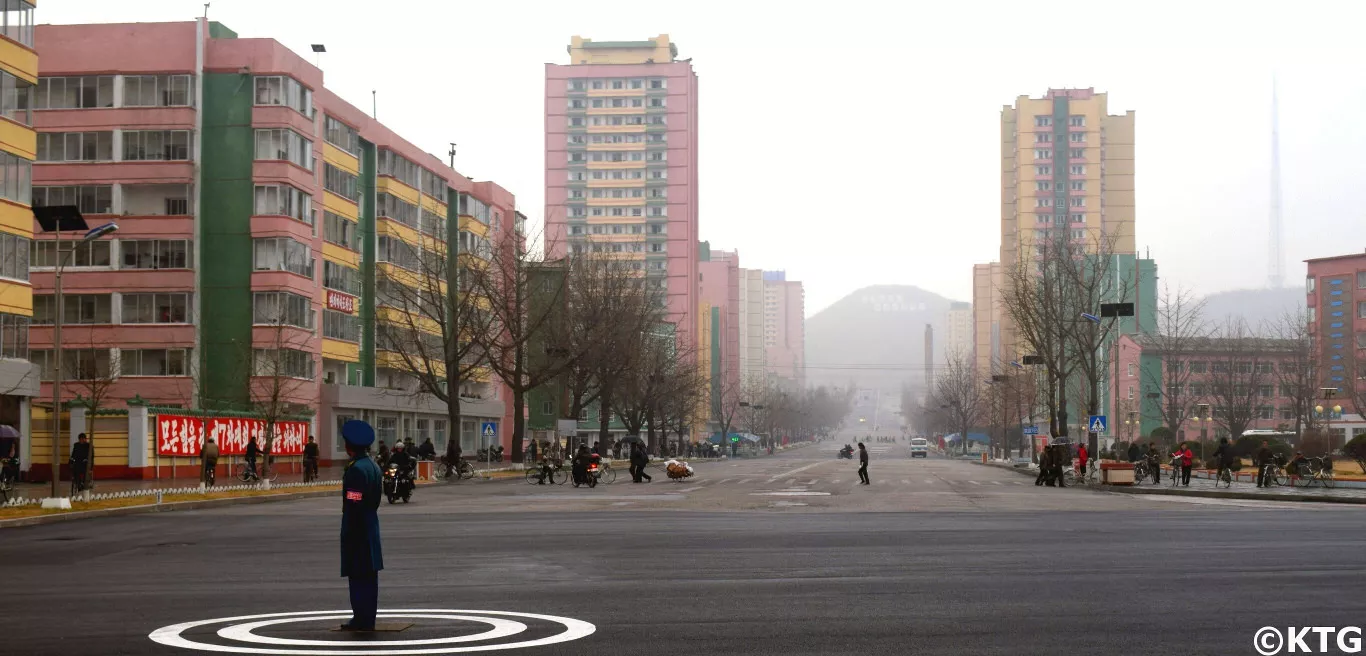
Kaesong North Korea | KTG® Tours' Ultimate Travel Guide
Kaesong North Korea Travel Guide | KTG® Tours | Ancient Treasures, Dog Meat Soup and the Cold War... located 8 km north from the DMZ (Pamunjom) in North Korea. Our North Korea tours include stopping at this historical city, capital of Koryo; the first unified state on the Korean peninsula
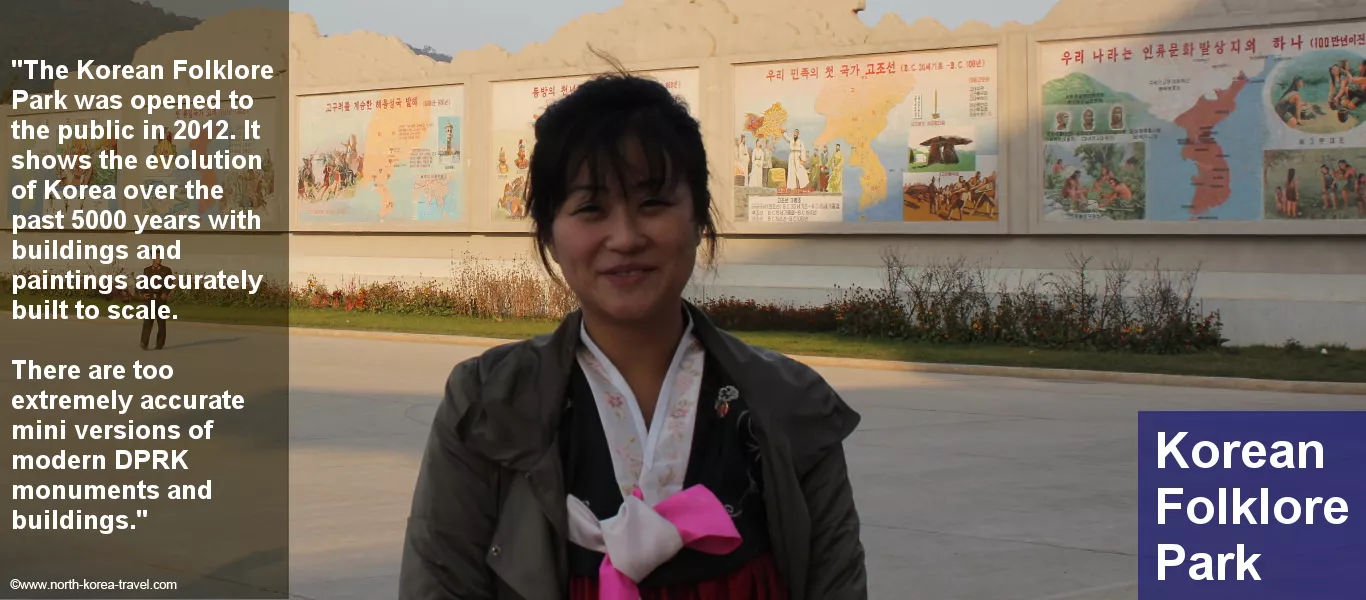
North Korea History - Information on the DPRK & North Korea Tours
North Korea History - information on the history of north korea. North Korea Travel provides budget north korea tours & north korea information which will be handy when traveling to the DPRK.
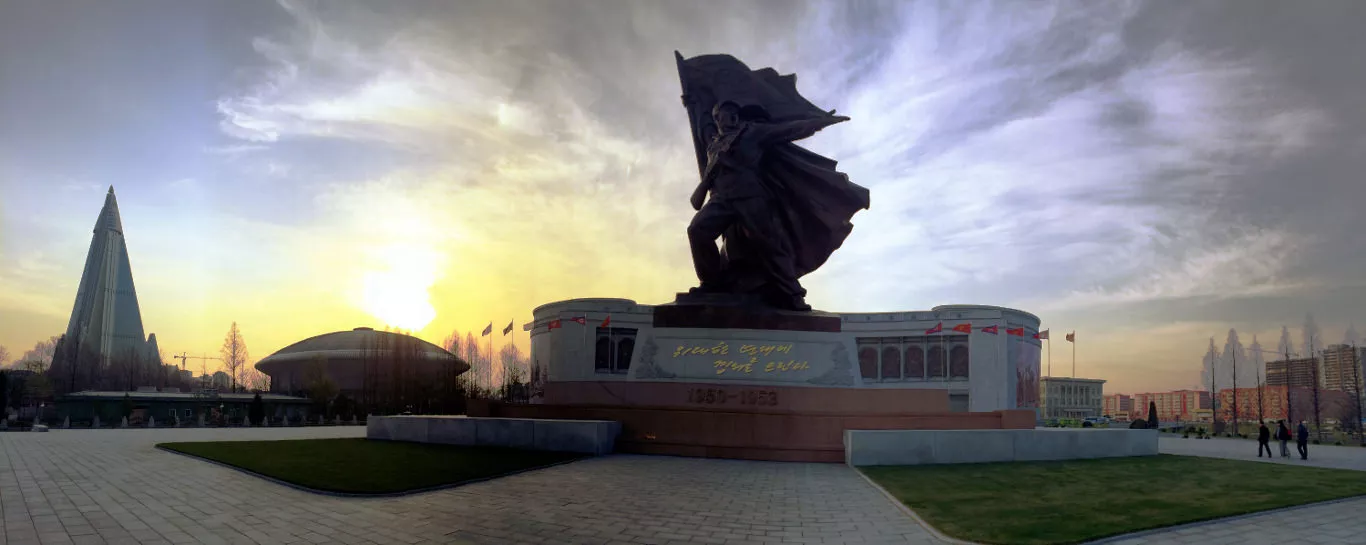
North Korea Museums | KTG® Tours | The Victorious Fatherland Liberation War Museum, Pyongyang
North Korea Museums | KTG® Tours | The Victorious Fatherland Liberation War Museum is in Pyongyang and has extremely vivid illustrations, weapons used during the Korean Civil War (1950-3) and scene reconstructions
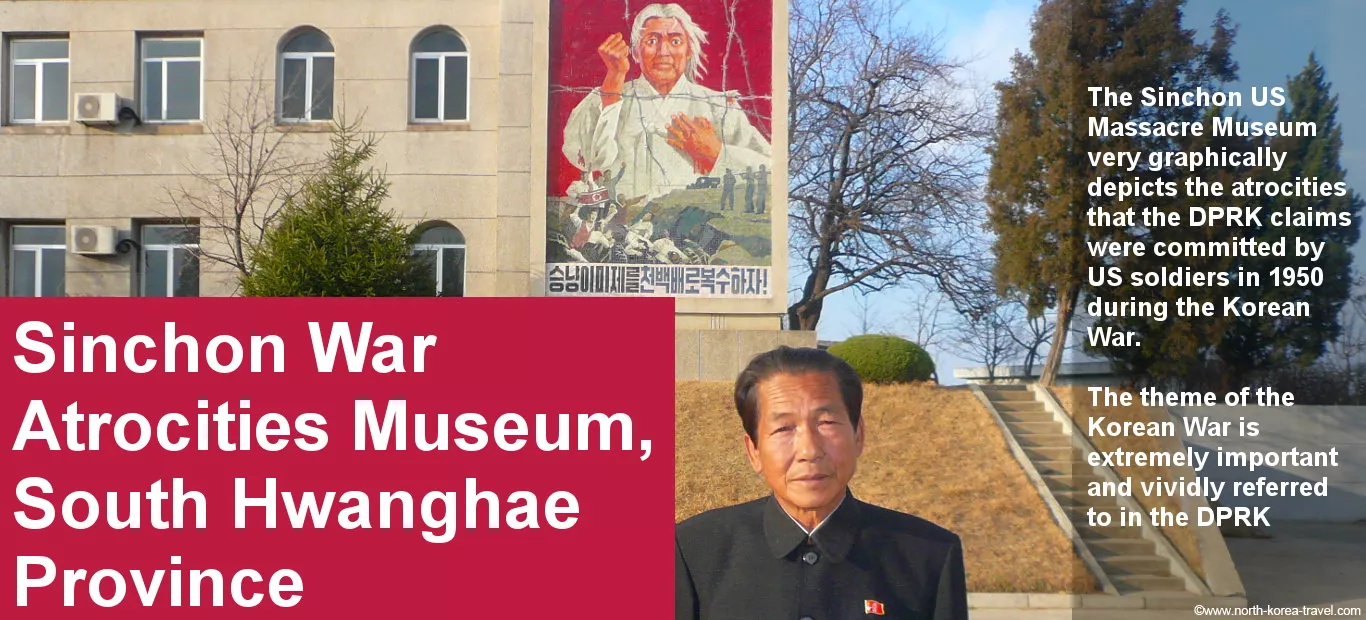
Sinchon | KTG® Tours | US War Atrocities Museum in North Korea's (DPRK) South Hwanghae Province
Sinchon | KTG® Tours | is a county in South Hwanghae Province in North Korea. The US Massacre Museum graphically displays crimes reportedly committed there by American soldiers on Korean civilians in the Korean War
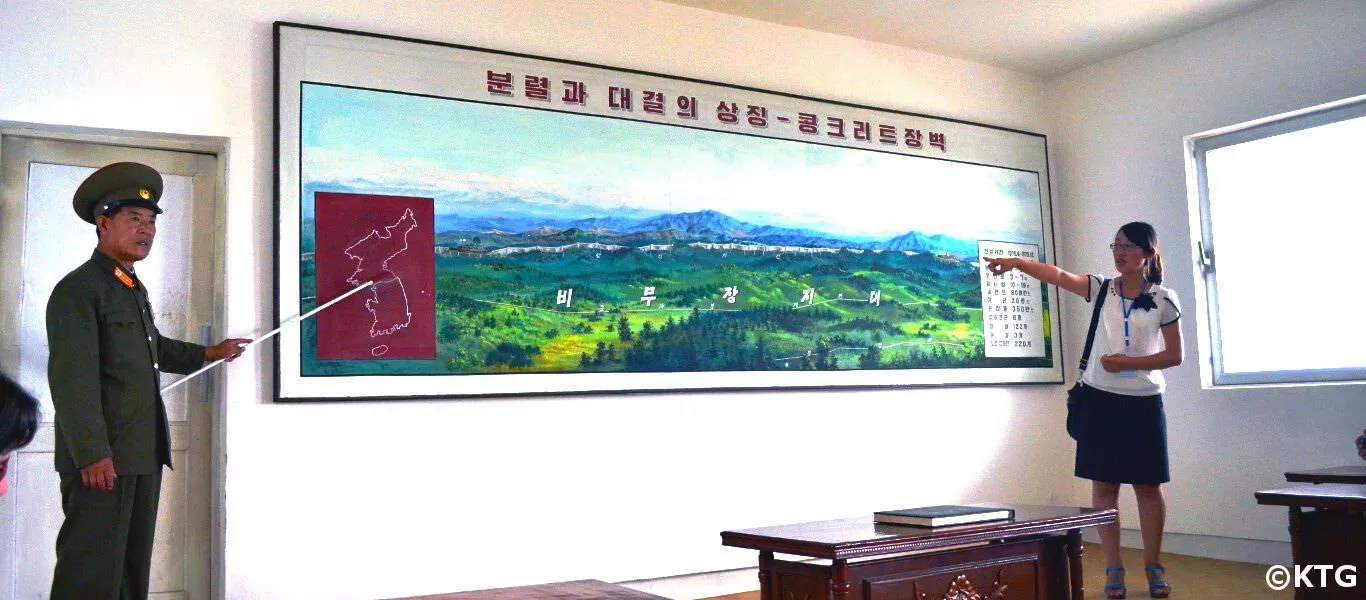
Concrete Wall Kaesong, North Korea | KTG® Tours' Ultimate Travel Guide
The Concrete Wall (Kaesong, North Korea) | KTG® Tours | A Symbol of Division and Conflict. A North Korean military officer waits for us at a remote military post 27 km east of Kaesong. He will explain to you how this wall literally cuts through the Korean peninusla, running parallel to the DMZ
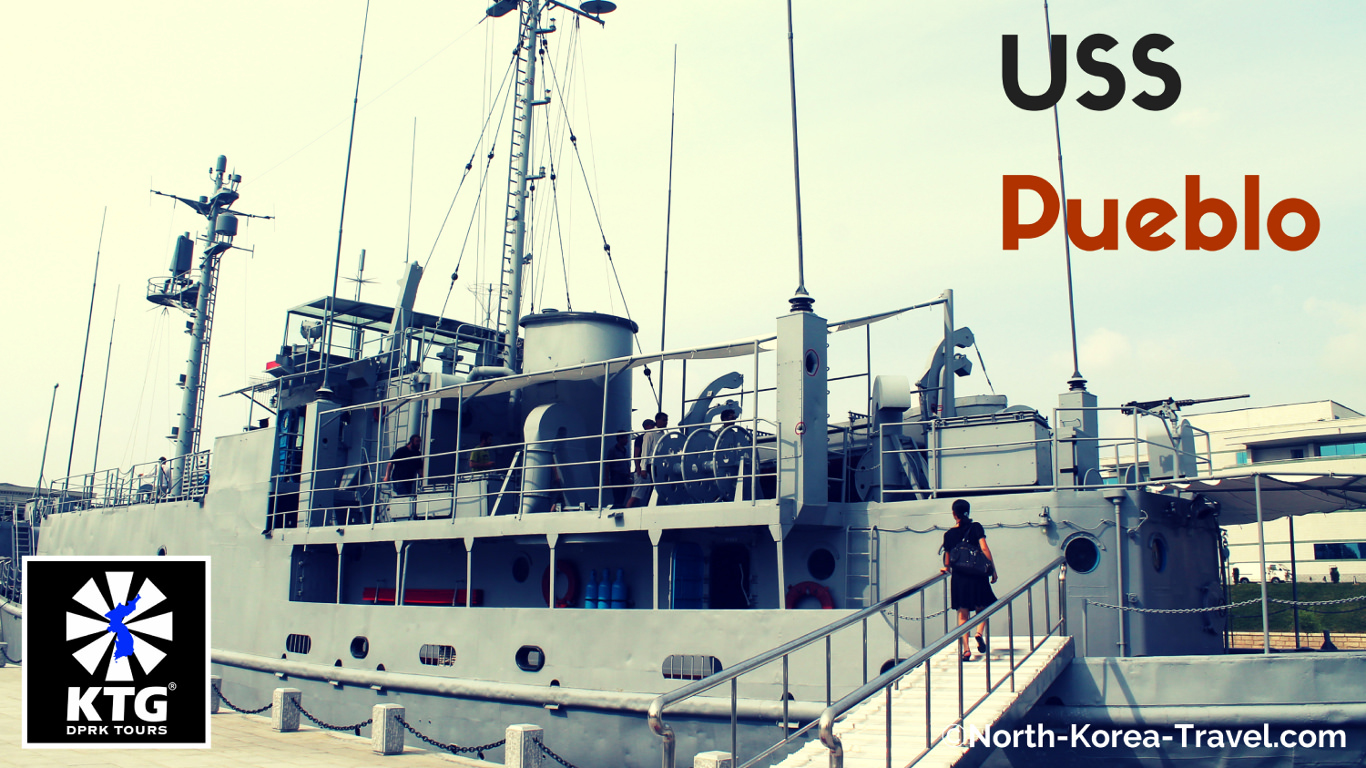
USS Pueblo - KTG - US Ship located in North Korea
USS Pueblo - KTG Tours - US ship captured by North Korea in 1968. See the USS Pueblo by the Taedong river in Pyongyang with KTG, offering budget North Korea Tours
Please click here to see what other areas you will be able to visit other than Kaesong while visiting North Korea.
- Privacy Policy
- Panmunjom(JSA) tour with a North Korean defector
Panmunjom / DMZ Combined Tour
- One Korea Tour
- The 3rd Infiltration Tunnel tour in Western Front Line
- Panmounjom's location
- The History of Panmunjom
- The Joint Security Area(JSA)
- Panmunjom Areas of Interest
- Villages in the DMZ
- Camp Bonifas, The Forward Most UNC Base
- The Demilitarized Zone(DMZ)
- 155 Miles of Armistice Line
- The Environment of the DMZ
- The Western Front Line Tour
- The Middle Front Line Tour
- The east Front Line Tour
- Infiltration Tunnels for Southern Invasion
- Location and Size of the Tunnels
- The Process of the Korean War
- The Armistice Agreement
- The Tragedy named 'War'
- UNITED NATIONS COMMAND
- Establishment and roles of headquarters
- a list of UN forces attended
- Pictures that show attended to Korean War
- injuries of UN forces attended
- Paticipation in the Korean War and Cherishing the Memory
- UN Memorial Cemetery
- Media coverage
PTC Tour program
Tour schedule.
- T : 82-2-771-5593~5
- F : 82-2-771-5596
- E-mail : [email protected],
- [email protected]
- 판문점 / 동시(컴바일)투어 스케줄
- 탈북자 스페셜 / 남침용 땅굴 투어
- 07:30~08:00 Registration(Koreana Hotel 8 th floor Panmunjom Travel Center (PTC) desk)
- 08:00~09:00 Take Freedom Highway to Imjingak
- 09:00~12:30 The 3 rd Infiltration Tunel, Dorasan Observatory, Dorasan Station (Transfer to the shuttle bus to enter the DMZ area)
- 12:40~13:20 Lunch (Bulgogi) and move to Unification Bridge
- 13:20~13:40 Check Passport at Unification Bridge Arrive at United Nation Command Security Battalion “Camp Bonifas”
- 13:45~14:15 Receive detailed Slide briefing
- 14:30~15:00 Take military bus to Joint Security Area, Freedom House Military Armistice Commission Building
- 15:30~16:30 Arrival at Koreana Hotel in Seoul
Tour Application
Payment method : cash or credit card, reservation rules.
- 1 According to the UNC rules the roster of the tourists to Panmunjum should be reported 48 hours (2 days) prior to the tour briefing time (13:45) in the camp Bonifas on the tour day. So person who is interested in this tour should send your name, passport number and nationality to us at least 3 days before.
- 2 Overseas resident Korean : Tourists should scan their Overseas resident registration issued by Korean Embassy and attach it in an e-mail along with their passport number and name at least 2 weeks prior to the tour day.
- 3 The following countries are required to have a Background Check from the UNC for this tour. Please scan your passport files and attach it in an email (at least 4 days prior to tour day)Our email address is as follows: [email protected]
Panmunjom - A detailed guide to visit the Korean truce village
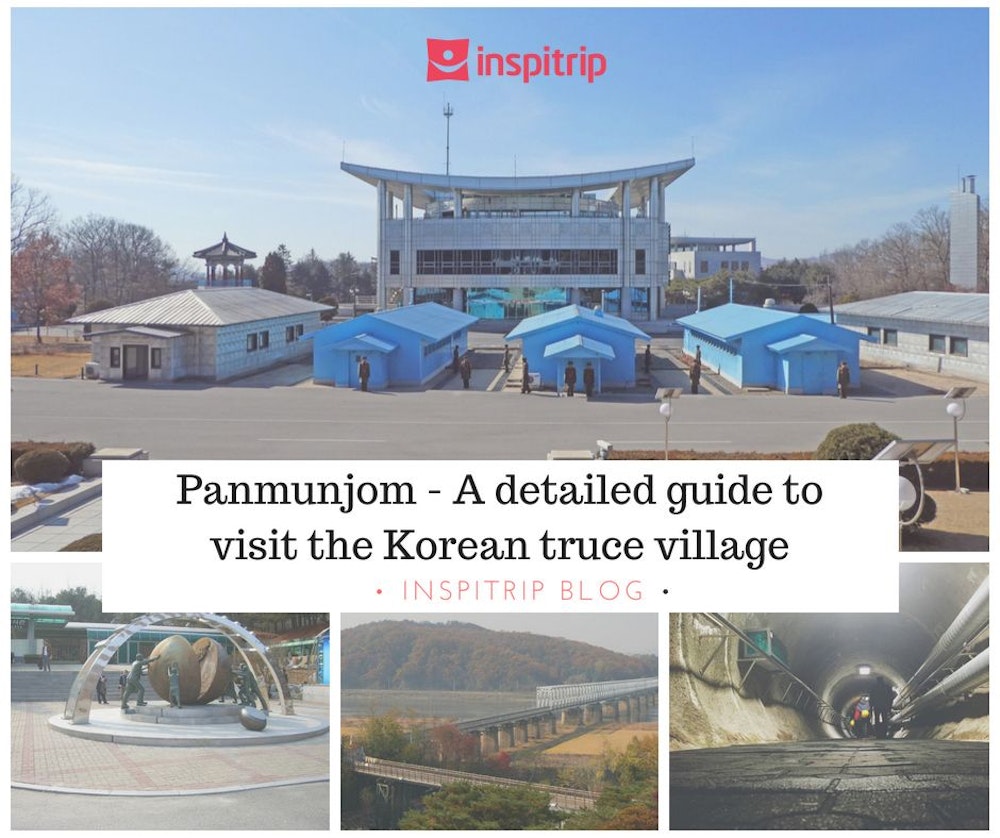
Panmunjom is located in the most sensitive area of Korea's demilitarised zone. It’s the only tourist destination where visitors are required to sign a release that asks them to accept responsibility for “injury or death as a direct result of enemy action." The Joint Security Area (JSA), aka Panmunjom, offers a look at the tensions that remain from the Korean War. The North and South technically remain at war, and the JSA, located deep within the Demilitarized Zone (DMZ), is the only place where visitors can see the actual border and North Korean soldiers on the other side. Indeed, joining a high-quality DMZ & JSA tour is one of the most unique things to do in Seoul . Here is our detailed guide to visiting the Panmunjom - Korean truce village.
You are about to enter the world's most protected border and witness the spine-chilling tension between North and South Koreas
History of panmunjom.
Panmunjom is a small village, about 55 km north of Seoul, that lies at the border between North and South Korea. It was originally called “nul ban ri,” or plank-door village, so-called because the house doors and bridges were made from planks of wood. When the village became the site of talks during the Korean War, Chinese officials labeled it with traditional Chinese characters, which when pronounced in Korean sounded like Panmunjom.The truce that ended hostilities between the two countries was signed here in 1953, but as peace was never agreed to, the two sides are still officially at war over fifty years later and a million men stand guard around the Demilitarized Zone (DMZ).
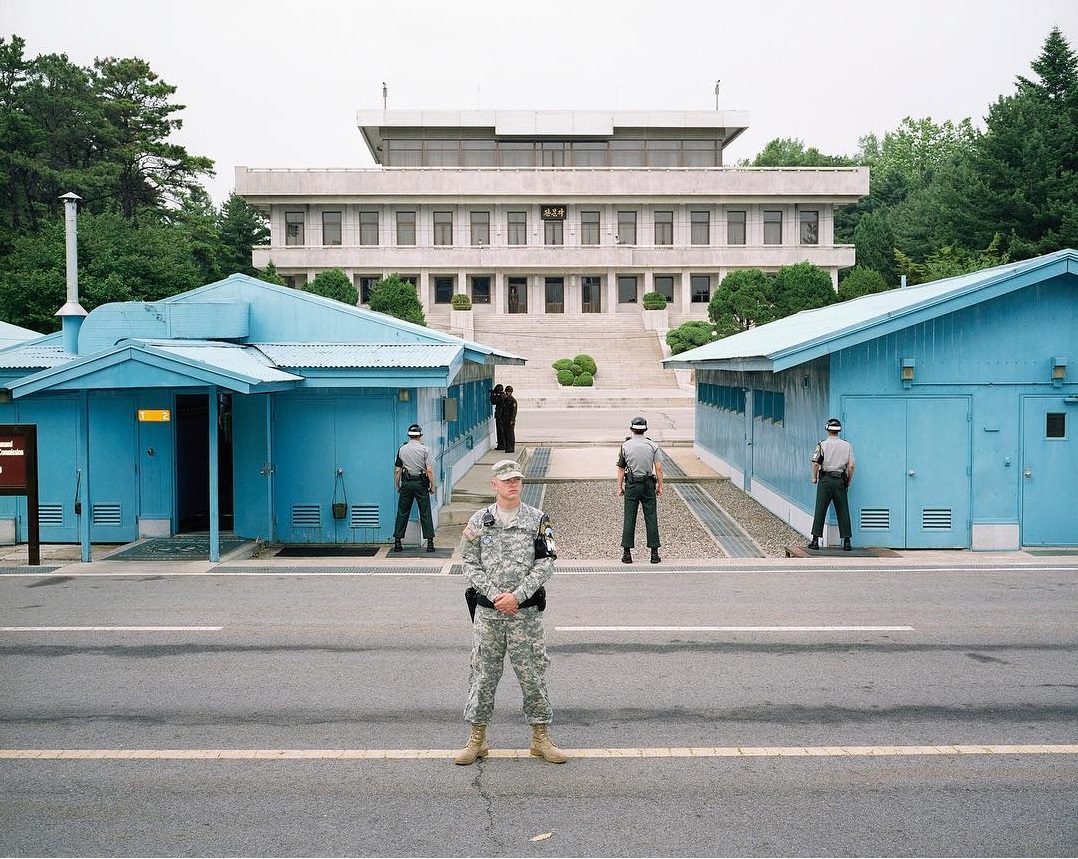
To repel an invasion, both sides of the highway, especially the side facing the Imjin River and open water to North Korea, are covered with barbed wire and dotted with observation posts every few hundred meters. Nearby hills house machine gun emplacements, the median strip has clusters of sandbags for defense, and many bridges above the highway can be activated as tank traps as they contain large concrete blocks that can be dynamited to block the road. Large illuminated signs, proclaiming "Freedom and Democracy" in Hangul script, face the North.
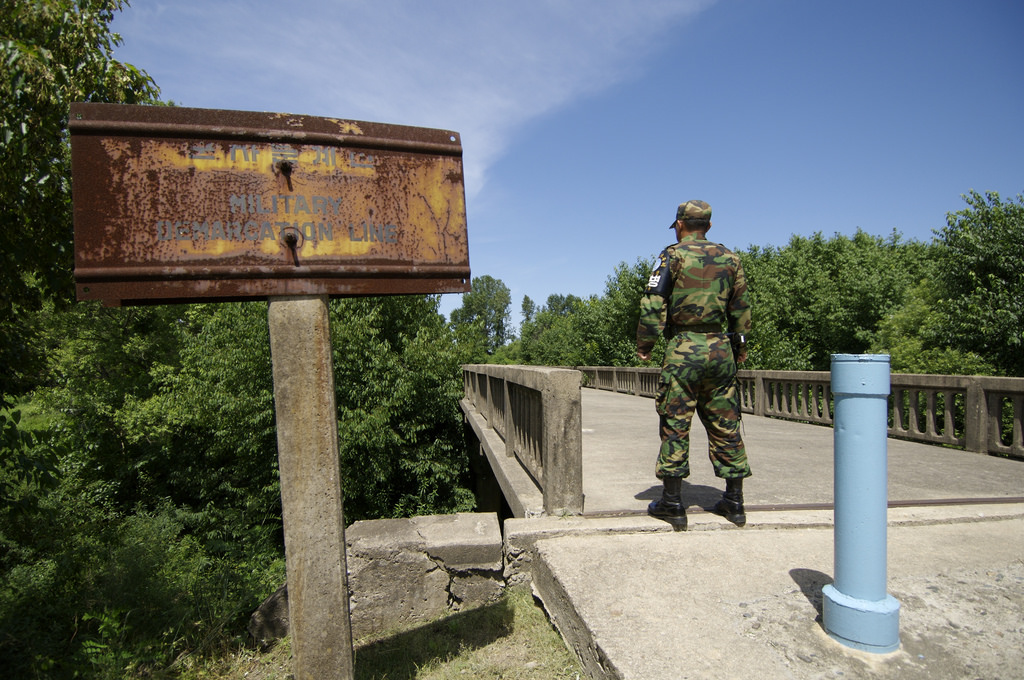
Have a spine-chilling experience by visiting DMZ & JSA , the most volatile area all in the world! Our guide will take care of everything so that you can enjoy your visit to the fullest!
- DMZ half day morning tour
- The best DMZ, JSA and third tunnel combined tour
- Panmunjom (JSA) tour with a North Korean defector
How to get to Panmunjom
Panmunjom sits less than 40 miles from Seoul. The only way into this heavily restricted area is on an organized tour. To enter the JSA, visitors must pass through multiple checkpoints before arriving at Camp Bonifas, escorted by either US or South Korean soldiers. Note citizens of certain countries are not allowed on these tours. Access to most of the are is forbidden, so the only way to visit Panmunjom is through a licensed tour operator.
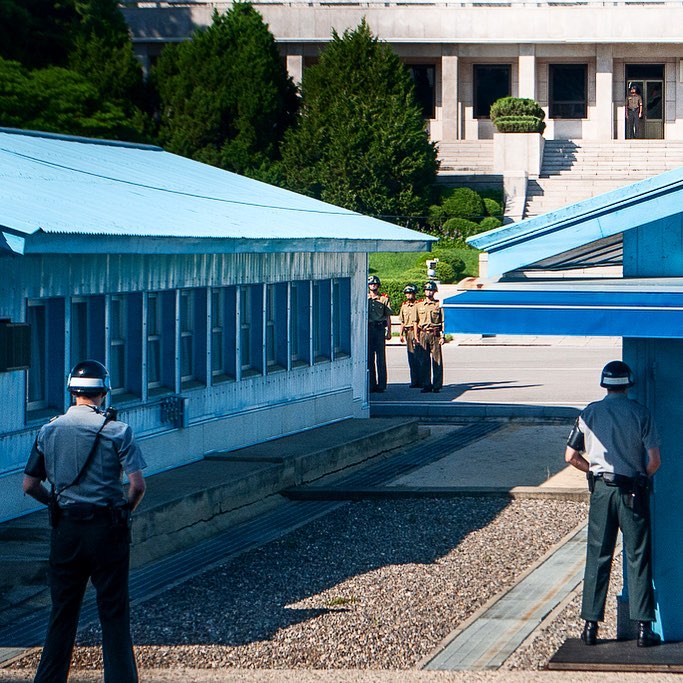
Panmunjeom is very close to the South Korean capital of Seoul, and tours from the center of the city with itineraries that include Panmunjeom generally start in the morning and end before the evening. The 62 km journey towards Panmunjeom from Seoul is a sight in itself. The 12-lane Freedom Road becomes eerily empty as you approach the border, as its primary purpose is to get tanks there as fast as possible if war breaks out.
Unlike any random touristy attractions, Panmunjom embodies the innermost secrets which only an intellectual tour guide from Inspitrip can help you unravel.
What you can expect in Panmunjom
There are no troops in the DMZ itself (except in the JSA), although both sides of the 4 km strip of land separating the Koreas are likely to be the most heavily armed in the world. Pillboxes, land mines, barbed wire, and tank stoppers line the entire border and stretch back halfway to Seoul in the South and Pyongyang in the North. This section is often referred to as the Militarized Zone. In South Korea, there are also adjacent border areas called Civilian Control Zones where public access is restricted.
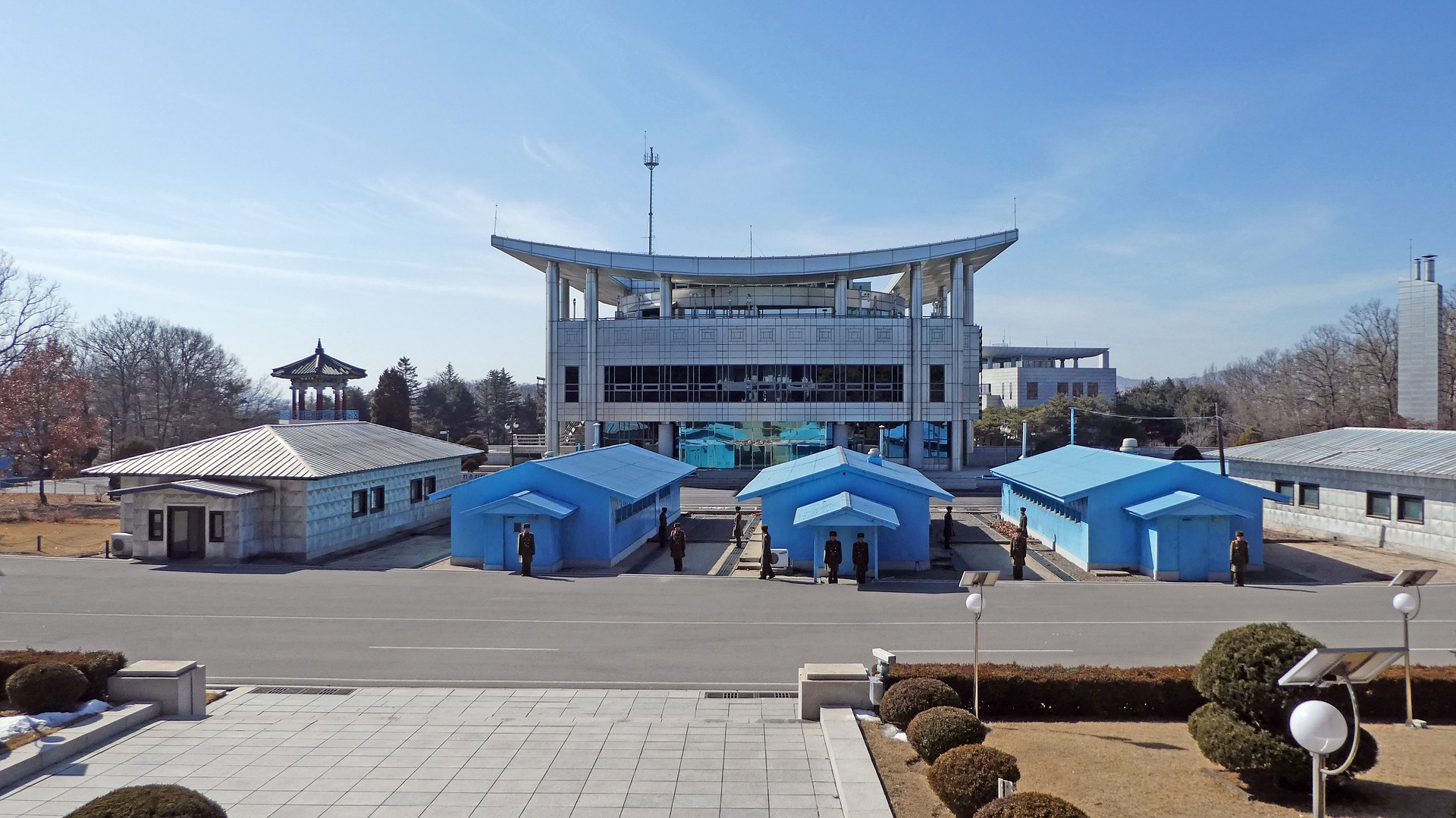
One kilometer east of the former village (now deserted) is the Joint Security Area (JSA), an almost circular patch of land with an 800 m diameter. This area is jointly policed by the South and North, and the two sides occasionally meet for discussions. Panmunjeom is right on the Military Demarcation Line (MDL), which is the actual border between North and South Korea. The DMZ is a four-kilometer-wide buffer strip centered on this MDL.
What you can experience in Panmunjom
Take a trip through history and learn about North Korean and South Korean. You will get to visit key sites of the struggle and learn about economic, political and social effects the war has had on both countries. The highlight of the trip is that you will be able to walk right up to the North Korean border on a tour of the Joint Security Area - the only portion of the DMZ where the North Korean and South Korean forces stand face to face.
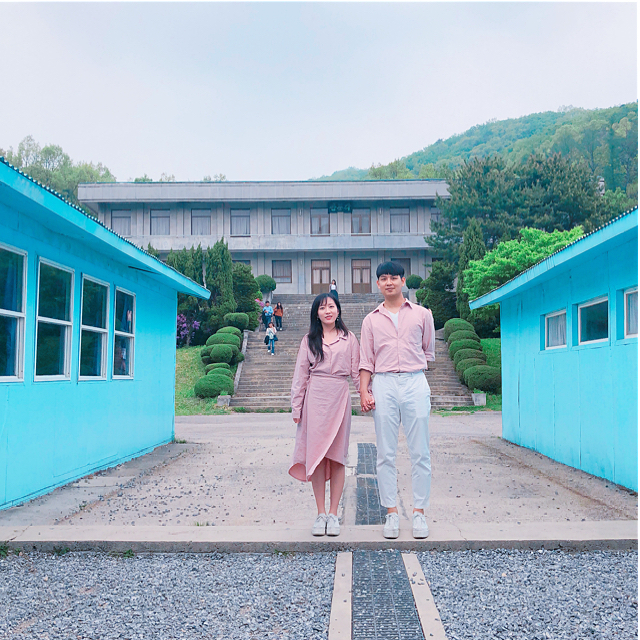
Due to the tension and security concerns involved, travelers are required to join an organized tour group in order to visit the truce village better known as the JSA. Day trips to the DMZ from Seoul include stops at the JSA, as well as other area attractions like the Third Infiltration Tunnel, Bridge of No Return, and an observation point where it’s possible to observe a North Korean village across the border through a telescope. You will also get to visit the Freedom House, Imjingak Park - home to many statues and monuments commemorating the Korean War. Read More : Detailed guide to visit the DMZ
Visit the Freedom House
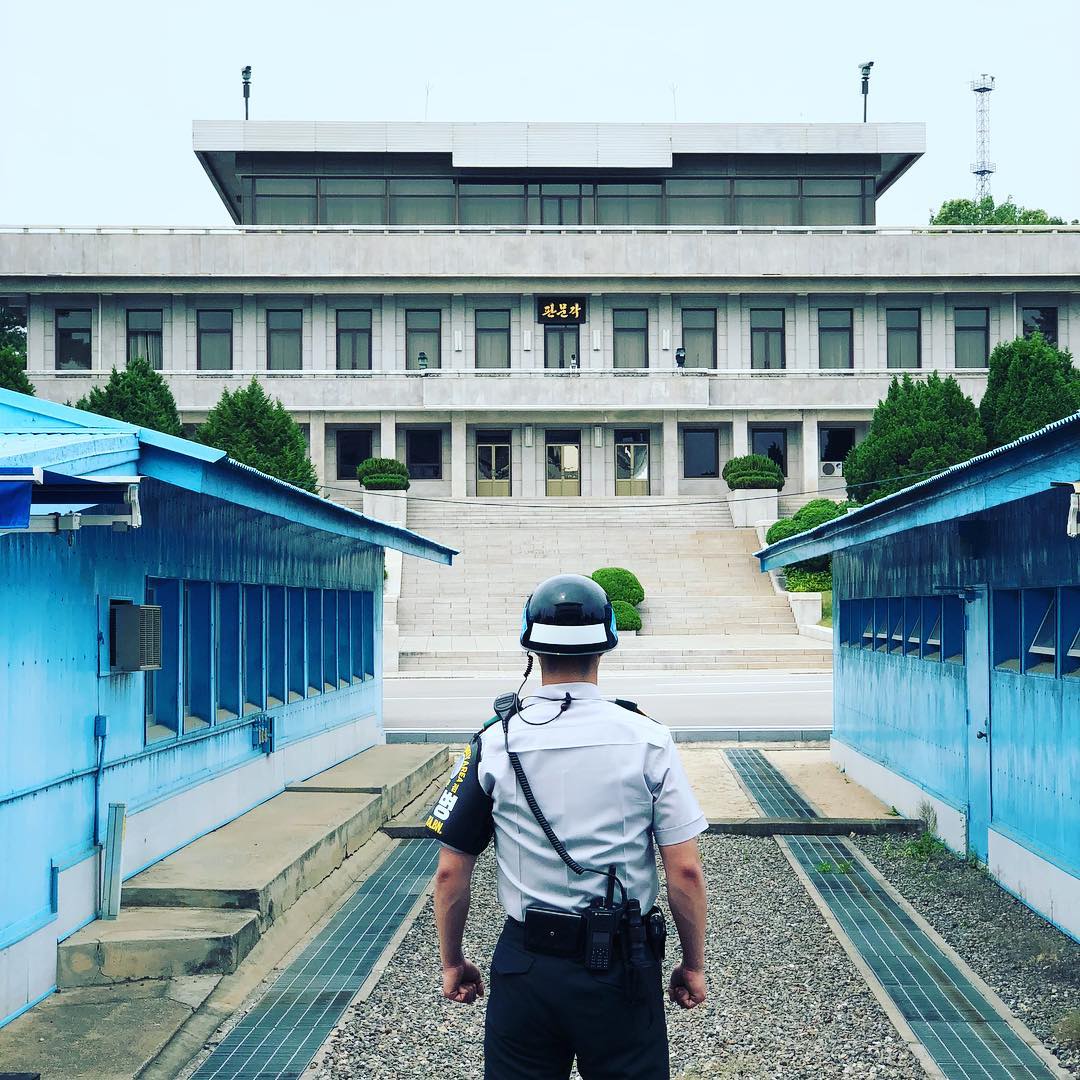
Located in JSA, the Freedom House functions as a meeting place for North and South Korea. The facility helps the two sides to negotiate and communicate, holding offices of major organizations like the South and North Red Cross Liaison Office. This stop often starts the JSA tour, setting the tone of the interaction between North and South Korea. The current building was constructed on July 9, 1998. It was built by the founder of Hyundai to host reunions of families separated during the Korean War. However, since North Korea has worried about sending their people through the division line of JSA, the house has been used only for Red Cross staffs and the liaison officers of South Korea.
See the Bridge of No Return
The Bridge of No Return is a small bridge where POWs were exchanged after the war. There were two operations for it: Operation Little Switch as a test case for prisoner repatriation and Operation Big Switch for a general exchange of prisoners. All the POWs were carried to both ends of the bridge and they were given a choice. Once they chose to cross over the road, they could not make a turning back, hence the name “Bridge of No Return”. About thirteen thousand UNC prisoners returned to their countries, and about eighty-nine thousand KPA and Chinese prisoners returned to their communist nations.
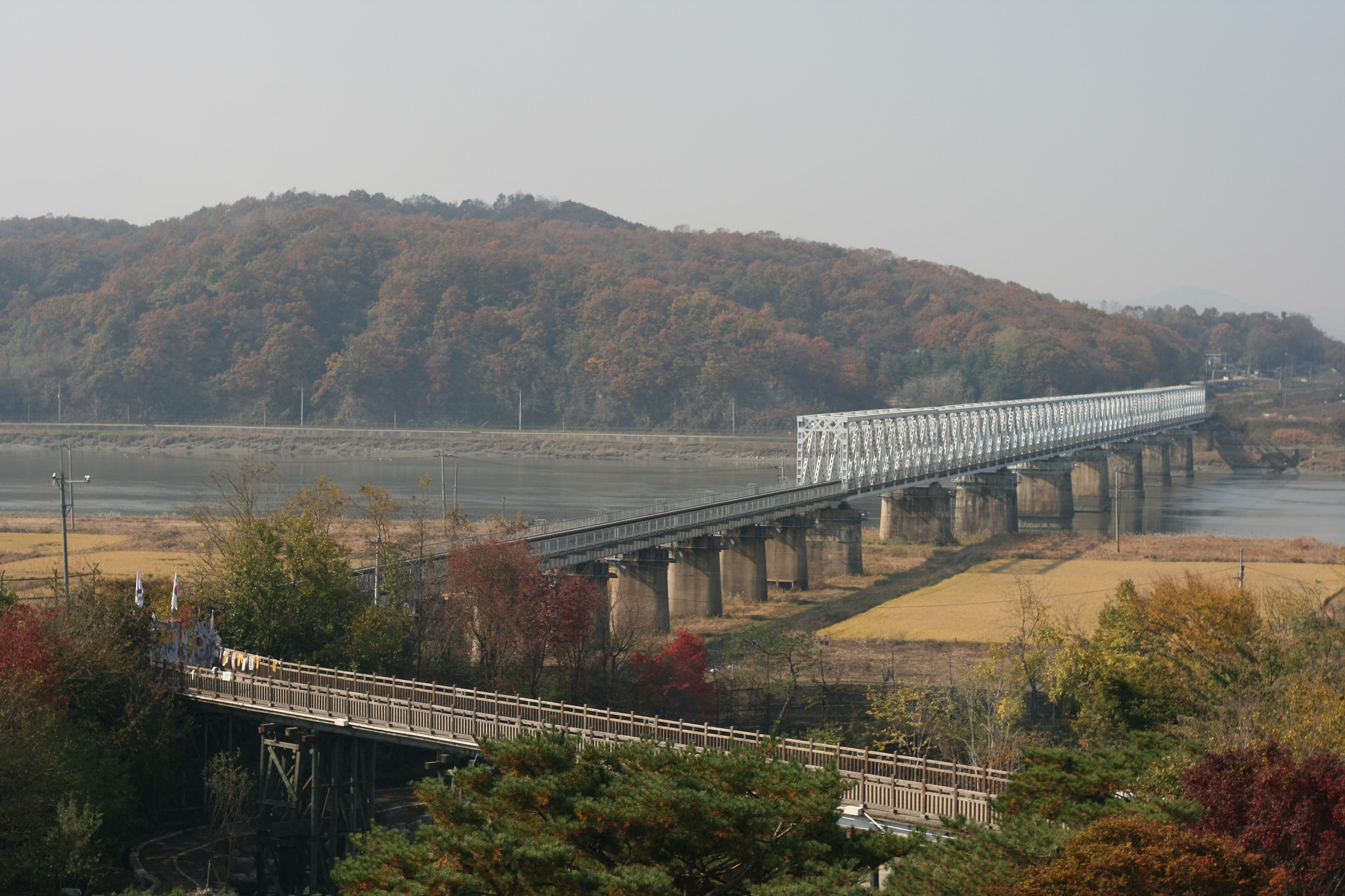

Wander around Imjingak Park
Saddening as it may be, the stories of separated families will inspire and move you to tears
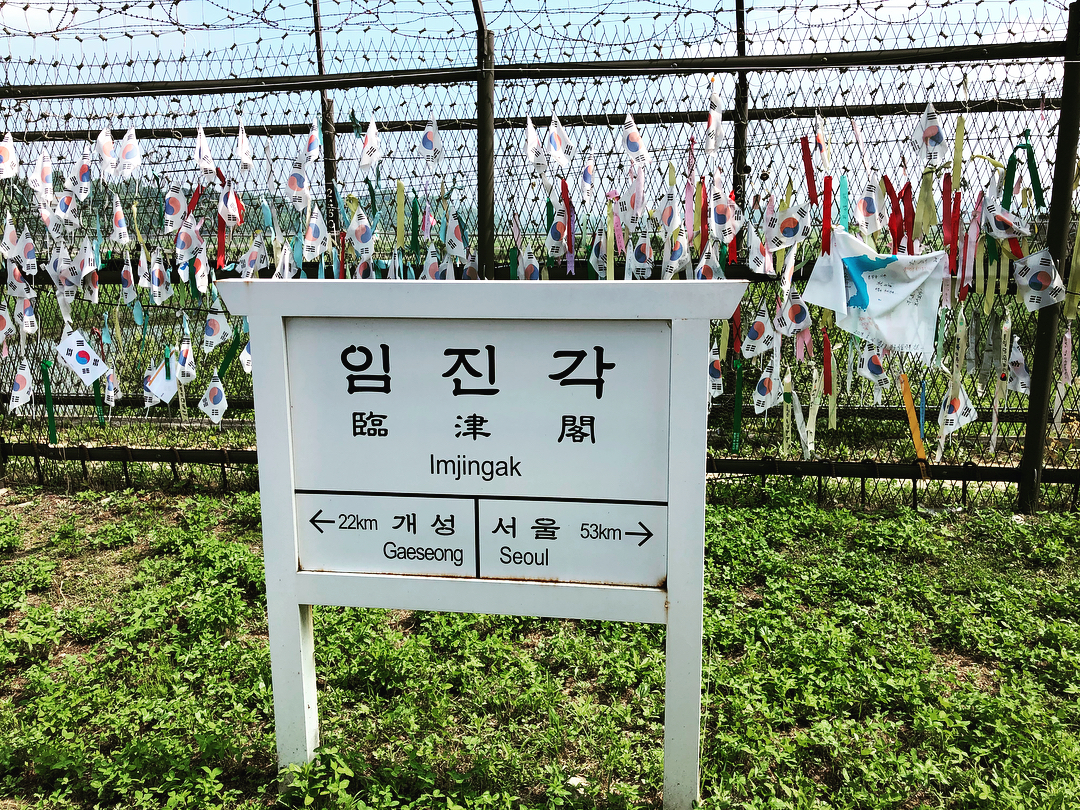
Imjingak, located 7 km from the Military Demarcation Line, is now at the forefront of tourism related to the Korean War. It was built in 1972 with the hope that someday unification would be possible. Three-storied Imjingak is surrounded by several monuments, Unification Park and North Korea Center. 400 kinds of photos and documents showing the stark reality of North Korea are displayed in the North Korea Center of Unification Board. Outside Imjingak, there are 12 kinds of tanks and crafts on display that were used during the war. Mangbaedan Alter, which stands opposite of Imjingak, is famous for the place where people from North Korea visit and perform ancestral rites by bowing toward their hometown every New Years Day and Chuseok (Korean Thanksgiving). If you are lucky enough, you can be connected with a North Korean defector to listen to heart-breaking stories of separated families. These wonderful experiences will at times make you feel sad; at others inspired. Be prepared to embrace all of these emotions during this unforgettable trip.
Observe North Korea with your naked eyes at Dora Observatory
From the observatory, you can overlook North Korea and various locations including Gaeseong, Songaksan, Kim Il-Sung Statue, and Geumamgol, the cooperation farm. As such, you might get a strange feeling knowing how close you are to North Korea. It will arouse your curiosity about meeting the North Korean and asking them how they make ends meet on a daily basis in the world’s most secretive country.
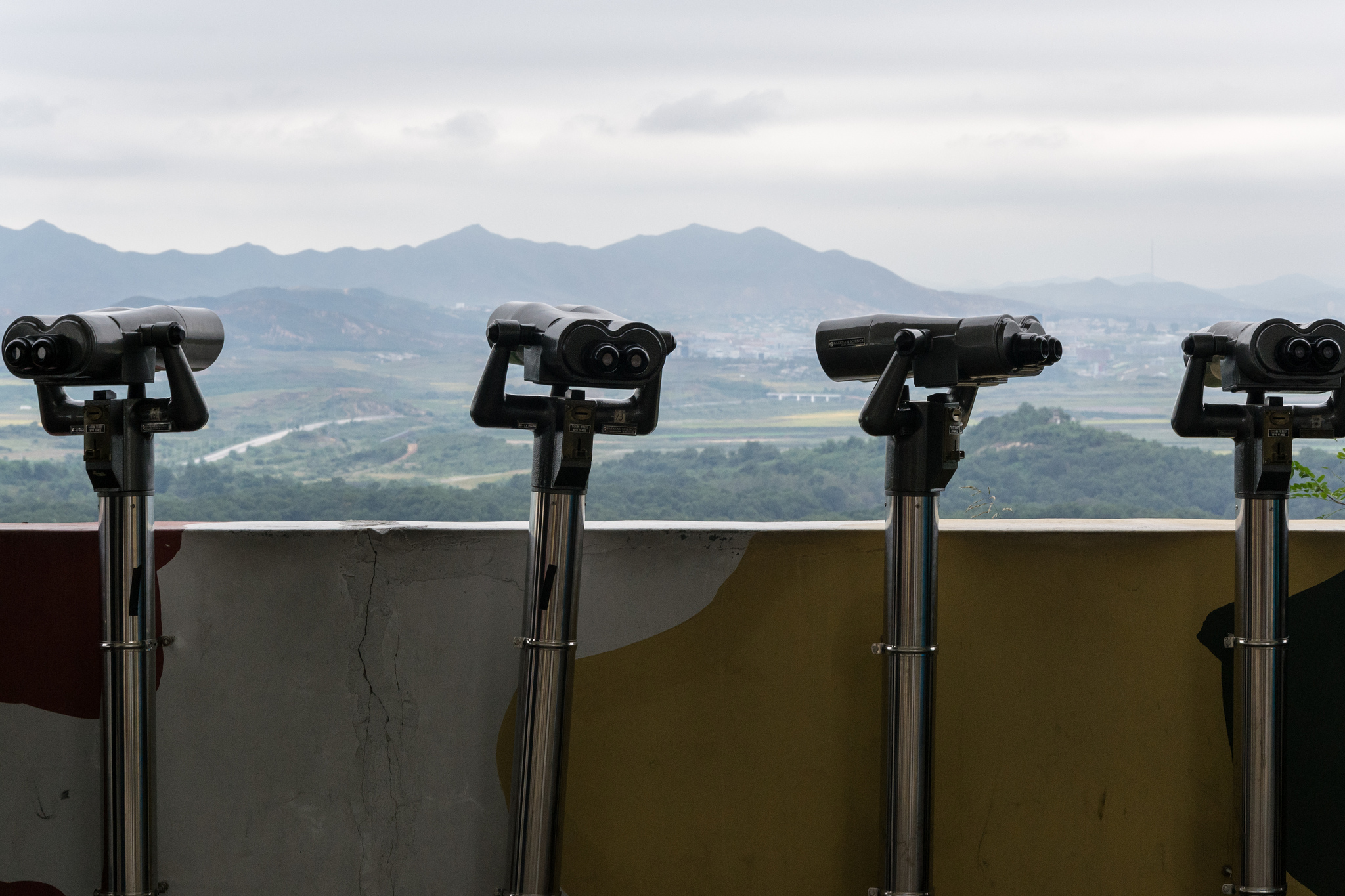
Head to The Third Tunnel
Only 44 km (27 miles) from Seoul, the incomplete tunnel was discovered in October 1978 following the detection of an underground explosion in June 1978, apparently caused by the tunnellers who had progressed 435 meters (1,427 feet) under the south side of the Korean Demilitarized Zone (DMZ). Visitors enter either by walking down a long steep incline that starts in a lobby with a gift shop or via a rubber-tyred train that contains a driver at the front or the back (depending on the direction as there is only one set of rails) and padded seats facing forward and backwards in rows for up to three passengers each. Photography is forbidden within the tunnel.The South Koreans have blocked the actual Military Demarcation Line in the tunnel with three concrete barricades. Tourists can walk as far as the third barricade, and the second barricade is visible through a small window in the third.
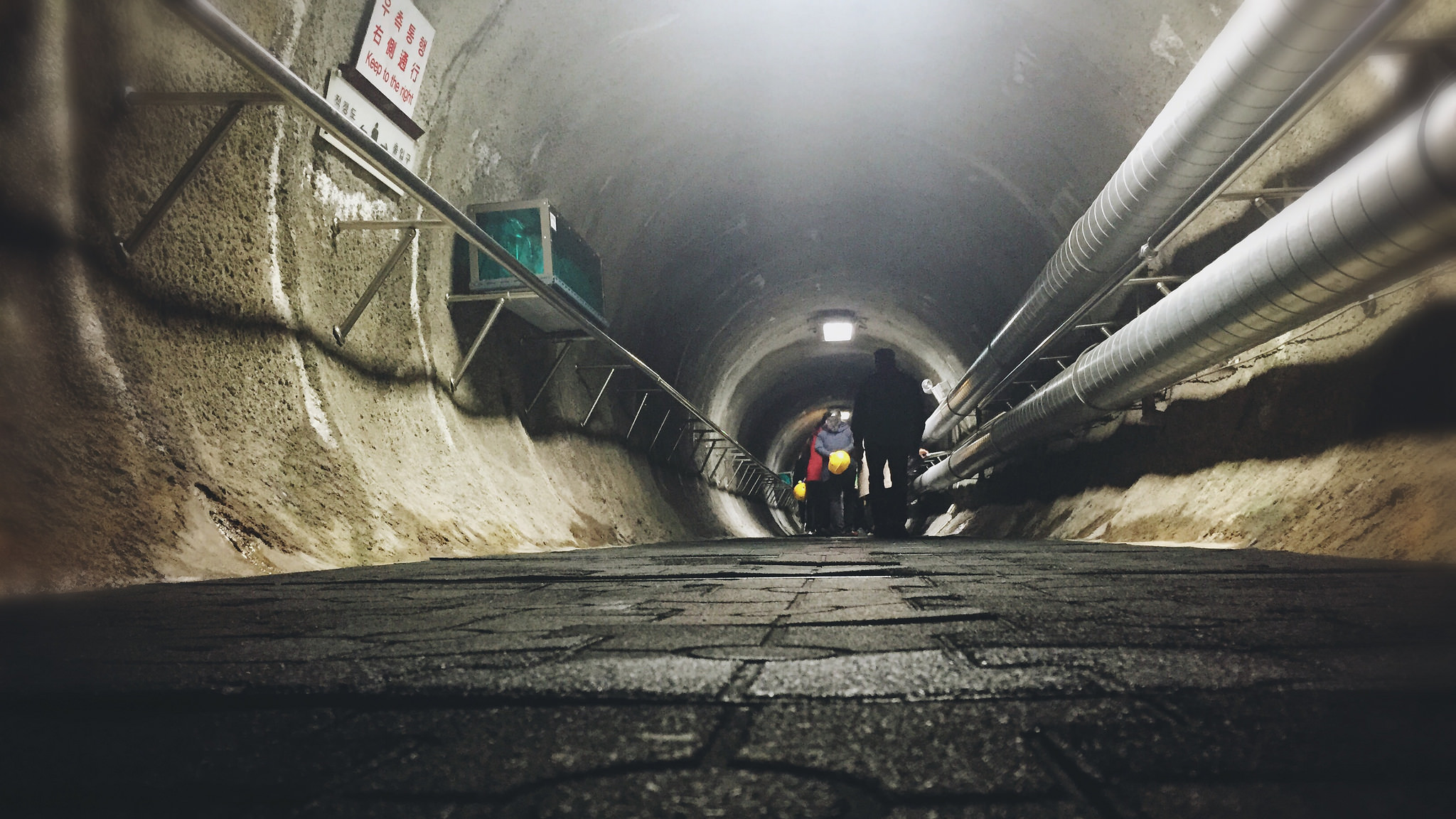
Buy souvenirs at Camp Bonifas
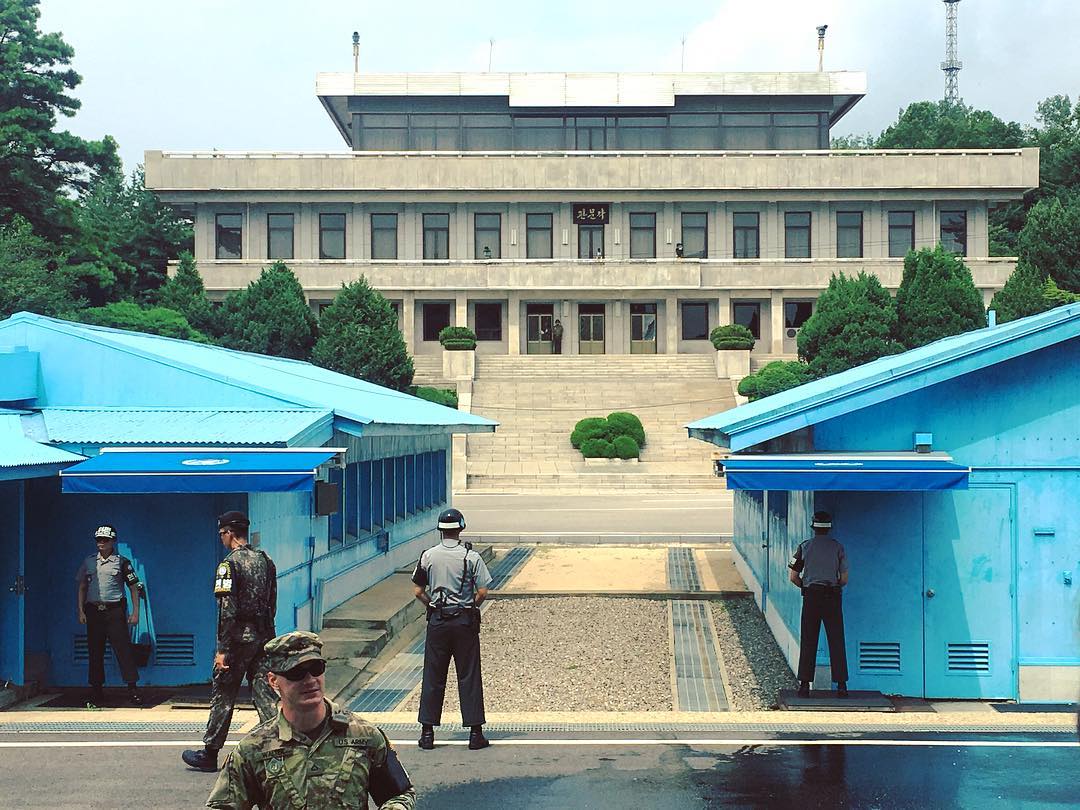
Camp Bonifas is a United Nations Command military post located 400 meters south of the southern boundary of the Korean Demilitarized Zone. It was 2,400 meters south of the Military Demarcation Line, which forms the border between South Korea (the Republic of Korea) and North Korea (the Democratic People's Republic of Korea). It was returned to the Republic of Korea in 2006. Camp Bonifas is home to the United Nations Command Security Battalion-Joint Security Area, whose primary mission is to monitor and enforce the Korean Armistice Agreement of 1953 between North and South Korea. The Republic of Korea and the United States Forces Korea soldiers conduct the United Nations Command DMZ Orientation Program tours of the JSA and surrounding areas. The camp has a gift shop where you can buy DMZ - and JSA- related souvenirs.
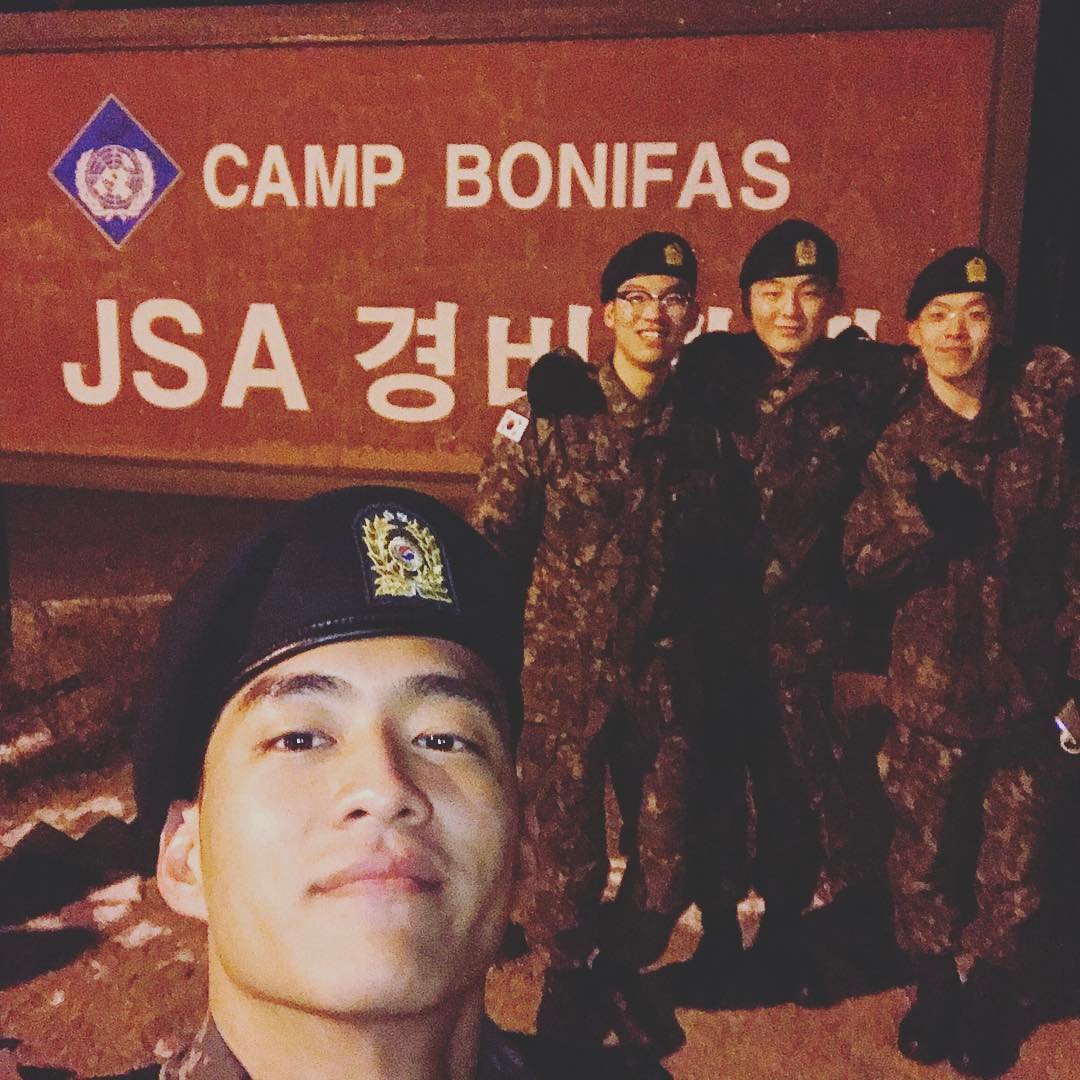
Visit DMZ Museum to broaden your mind about the historical events of the Korean war
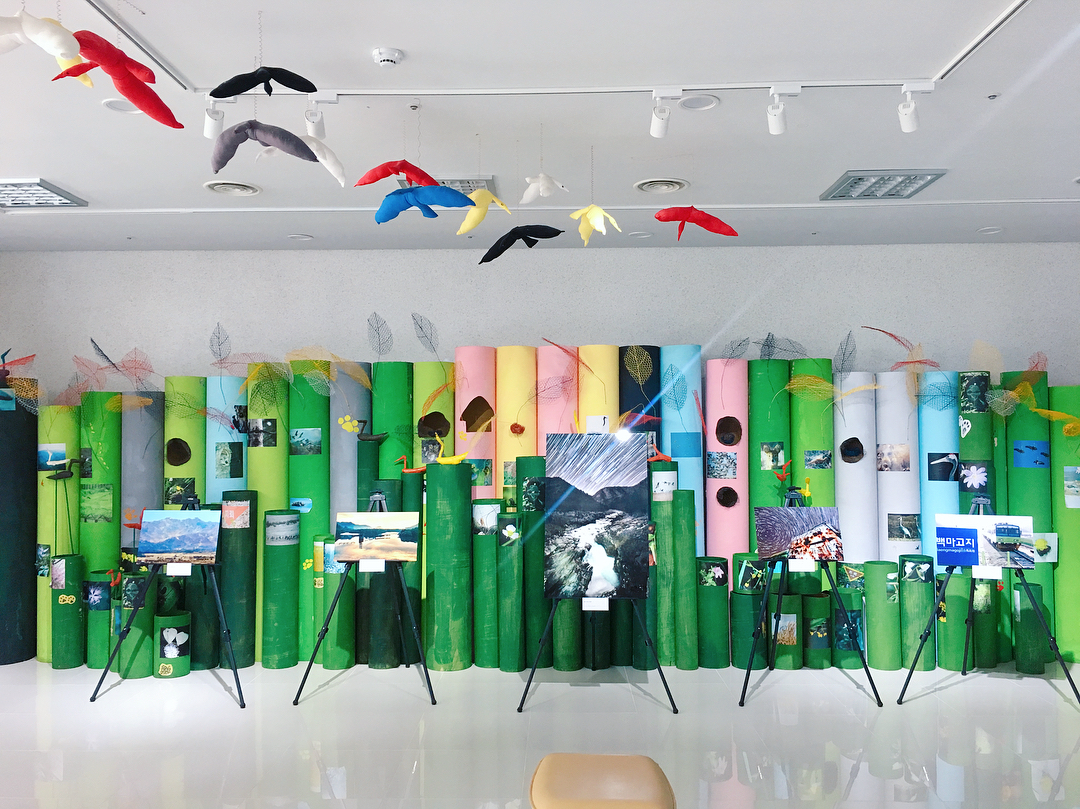
DMZ Museum is comprised of four themed-exhibition halls, in addition to auxiliary buildings including a special exhibition center, theater, and other convenience facilities. The museum teaches visitors everything there is to know about the DMZ, from its historical background to reports on the area's future ecological importance and cultural value. Visit the theater to learn more about the Korean War and its aftermath through 3D documentary films.
Traveling Tips
- The JSA is a must-see for history buffs and anyone looking for a better understanding of the Korean conflict.
- All Panmunjom tour participants are required to carry a valid passport, be at least 10 years of age, and dress appropriately.
- Refrain from wearing worn or faded jeans, exercise clothes, sleeveless shirts, collarless shirts, short skirts, shorts, tight fitting clothes, military clothes, or sandals.
- Don’t speak with, gesture, or even seem to respond to people from the other side (North Korea).
- Sometimes, you will be prevented from entering the common security area (JSA) because of military or other official events.
- If you come from these following countries, you are requested to send the scan of your passports at least 4 days prior to the tour day to your tour operator: Afghanistan, Algeria, Azerbaijan, Bahrain, Bangladesh, Belarus, Bolivia, Bosnia, Burma, China, Cuba, Egypt, Estonia, Georgia, Hong Kong, India, Indonesia, Iran, Iraq, Israel, Jordan, Kazakhstan, Kuwait, Kyrgyzstan, Latvia, Lebanon, Libya, Lithuania, Macau, Malaysia, Moldova, Morocco, Nigeria, North Korea, Oman, Pakistan, Palestinian authority, Qatar, Russia, Saudi Arabia, Singapore, Somalia, Sudan, Syria, Taiwan, Tajikistan, Tunisia, Turkmenistan, Ukraine, United Arab Emirates, Uzbekistan, Venezuela, Vietnam, Yemen
- You can have lunch or dinner at any Korean restaurant nearby during the trip
- The only way to visit Panmunjom is to go with a licensed tour operator.

- South Korea
- Day Trips & Excursions

Full-Day Paju DMZ and JSA Tour from Seoul
- Tour includes pickup and drop-off from the Hotel President in Seoul
- 9-hour Paju, DMZ and JSA tour from Seoul
- Explore Paju and the Joint Security Area with a guide
- Learn why the Demilitarised Zone is in place and gain insight into the barriers to reconciliation
- Visit important sites including the 3rd Infiltration Tunnel, Dora Observatory and Dorasan Station
Inclusions & Exclusions
- Local guide
- Transportation with driver
- Lunch (seasonal local food)
- All taxes, fees and handling charges
- Pickup and drop-off (from the Hotel President only)
- Entry or Admission - Camp Bonifas
- Entry or Admission - Panmunjom
- Entry or Admission - Dorasan Station
- Entry or Admission - The Third Tunnel
- Entry or Admission - Dora Observatory
- Food and drinks (unless specified)
- Souvenir photos (available to purchase)
- Hotel pickup and drop-off
Departure & Return
7th floor of the Hotel President, Seoul
7:50amTimes are subject to change due to local traffic conditions.
Returns to the Hotel President or Lotte Hotel KAL Limousine Station
Additional Info
- Confirmation will be received within 48 hours of booking, subject to availability
- A current valid passport is required on the day of travel
- No heart problems or other serious medical conditions
- Not recommended for travelers with back problems
- Not wheelchair accessible
- A current valid passport copy must be sent to the tour operator upon confirmation of booking
- UN requires a copy of all passengers' passports at least 4 days before the travel day. Please send your passport copy to the tour operator immediately upon confirmation of booking. Your reservation will be canceled automatically if your passport copy is not received on time
- Minimum age is 12 years
- Please check the restricted countries for this tour: Afghanistan, Cuba, Iran, Iraq, Libya, North Korea, South Korea, Pakistan, Sudan, and Syria
- The itinerary is subject to change due to traffic conditions and military reasons
- In the event military or other official circumstances prevent entry into the JSA, the tour will be cancelled and customer will receive a refund.
- A moderate amount of walking is involved; comfortable walking shoes are recommended
- Operates in all weather conditions, please dress appropriately
- The following attire and accessories are specially prohibited during the JSA Tour:
- Outer articles of clothing which are sheer or stretch material such as warm-ups pants and leggings
- Flip flops and similar footwear are specifically banned
- Sports uniforms, logos or athletic clothing of any kind
- Clothing with military-style camouflage, including hunting apparel
- Leather "biker" vests and leather riding chaps
- Umbrellas (except for during periods of precipitation)
- Tripods (except for authorized media)
- No tours on following national holidays in 2018 : 2
Cancellation Policy
- If you cancel at least 7 day(s) in advance of the scheduled departure, there is No cancellation fee
- If you cancel between 3 and 6 day(s) in advance of the scheduled departure, there is 50 percent cancellation fee
- If you cancel within 2 day(s) in advance of the scheduled departure, there is 100 percent cancellation fee
Your Contact Details
Questions or requests.
Do you have questions or specific requests regarding this tour?
- --> --> --> --> -->